Neil Young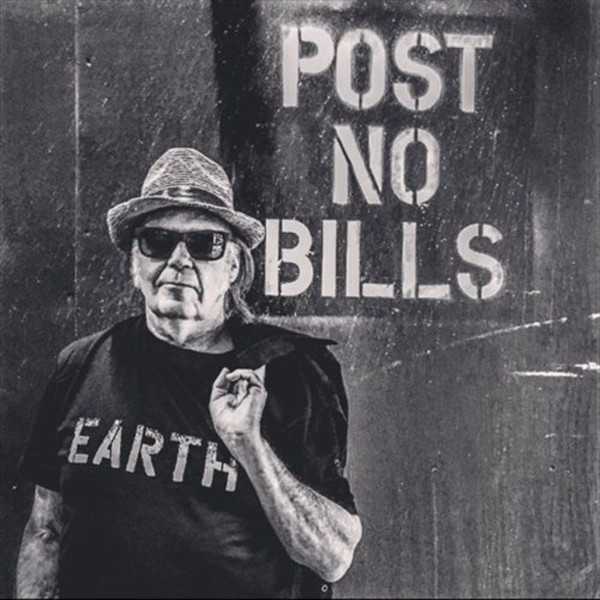 | ||
| Allmusic Biography : After Neil Young left the California folk-rock band Buffalo Springfield in 1968, he slowly established himself as one of the most influential and idiosyncratic singer/songwriters of his generation. Youngs body of work ranks second only to Bob Dylan in terms of depth, and he has sustained his critical reputation, as well as record sales, for a longer period of time than Dylan, partially because of his willfully perverse work ethic. From the beginning of his solo career in the late 60s to the 21st century, he has never stopped writing, recording, and performing; his official catalog only represents a portion of his work, since he keeps countless tapes of unreleased songs in his vaults. Just as importantly, Young has continually explored new musical territory, from rockabilly and the blues to electronic music. But these stylistic exercises only gain depth when compared to his two primary styles: gentle folk and country-rock, and crushingly loud electric guitar rock, which he frequently recorded with the California garage band Crazy Horse. Throughout his career, Young alternated between these two extremes, and both proved equally influential; there were just as many singer/songwriters as there were grunge and country-rock bands claiming to be influenced by Neil Young. Despite his enormous catalog and influence, Young continued to move forward, writing new songs and exploring new music. That restless spirit ensured that he was one of the few rock veterans as vital in his old age as he was in his youth. Born in Toronto, Canada, Neil Young moved to Winnipeg with his mother following her divorce from his sports journalist father. Young began playing music in high school. Not only did he play in garage rock outfits like the Squires, but he also played in local folk clubs and coffee houses, where he eventually met Joni Mitchell and Stephen Stills. During the mid-60s, he returned to Toronto, where he played as a solo folk act. By 1966, he joined the Mynah Birds, which also featured bassist Bruce Palmer and Rick James. The group recorded an albums worth of material for Motown, none of which was released at the time. Frustrated by his lack of success, Young moved to Los Angeles in his Pontiac hearse, taking Palmer along as support. Shortly after they arrived in L.A., they happened to meet Stills, and they formed Buffalo Springfield, who quickly became one of the leaders of the California folk-rock scene. Despite the success of Buffalo Springfield, the group was plagued with tension, and Young quit the band several times before finally leaving to become a solo artist in May of 1968. Hiring Elliot Roberts as his manager, Young signed with Reprise Records and released his eponymous debut album in early 1969. By the time the album was released, he had begun playing with a local band called the Rockets, which featured guitarist Danny Whitten, bassist Billy Talbot, and drummer Ralph Molina. Young renamed the group Crazy Horse and had them support him on his second album, Everybody Knows This Is Nowhere, which was recorded in just two weeks. Featuring such Young staples as "Cinnamon Girl" and "Down by the River," the album went gold. Following the completion of the record, he began jamming with Crosby, Stills & Nash, eventually joining the group for their spring 1970 album, Déjà Vu. Although he was now part of Crosby, Stills, Nash & Young, he continued to record as a solo artist, releasing After the Gold Rush in August 1970. The album, along with its accompanying single "Only Love Can Break Your Heart," established Young as a solo star, and fame only increased through his association with CSN&Y. Although Crosby, Stills, Nash & Young were a very successful act, they were also volatile, and they had split by the spring 1971 release of the live Four Way Street. The following year, Young had his first number one album with the mellow country-rock of Harvest, which also featured his first (and only) number one single, "Heart of Gold." Instead of embracing his success, he spurned it, following it with the noisy, bleak live film Journey Through the Past. Both the movie and its soundtrack received terrible reviews, as did the live Time Fades Away, an album recorded with the Stray Gators that was released in 1973. Both Journey Through the Past and Time Fades Away signaled that Young was entering a dark period in his life, but they only scratched the surface of his anguish. Inspired by the overdose deaths of Danny Whitten in 1972 and his roadie Bruce Berry the following year, Young wrote and recorded the bleak, druggy Tonights the Night late in 1973, but declined to release it at the time. Instead, he released On the Beach, which was nearly as harrowing, in 1974; Tonights the Night finally appeared in the spring of 1975. By the time of its release, Young had recovered, as indicated by the records hard-rocking follow-up, Zuma, an album recorded with Crazy Horse and released later that year. Youngs focus began to wander in 1976, as he recorded the duet album Long May You Run with Stephen Stills and then abandoned his partner midway through the supporting tour. The following year he recorded the country-rock-oriented American Stars n Bars, which featured vocals by Nicolette Larson, who was also prominent on 1978s Comes a Time. Prior to the release of Comes a Time, Young scrapped the country-rock album Homegrown and assembled the triple-album retrospective Decade. At the end of 1978, he embarked on an arena tour called Rust Never Sleeps, which was designed as a showcase for new songs. Half of the concert featured Young solo, the other half featured him with Crazy Horse. That was the pattern that Rust Never Sleeps, released in the summer of 1979, followed. The record was hailed as a comeback, proving that Young was one of the few rock veterans who attacked punk rock head-on. That fall he released the double album Live Rust and the live movie Rust Never Sleeps. Rust Never Sleeps restored Young to his past glory, but he perversely decided to trash his goodwill in 1980 with Hawks & Doves, a collection of acoustic songs that bore the influence of conservative, right-wing politics. In 1981, Young released the heavy rock album Re*ac*tor, which received poor reviews. Following its release, he left Reprise for the fledgling Geffen Records, where he was promised lots of money and artistic freedom. Young decided to push his Geffen contract to the limit, releasing the electronic Trans in December 1982, where his voice was recorded through a computerized vocoder. The album and its accompanying technology-dependent tour were received with bewildered, negative reviews. The rockabilly of Everybodys Rockin (1983) was equally scorned, and Young soon settled into a cult audience for the mid-80s. Over the course of the decade, Young released three albums that were all stylistic exercises. In 1985, he released the straight country Old Ways, which was followed by the new wave-tinged Landing on Water the following year. He returned to Crazy Horse for 1987s Life, but by that time, he and Geffen had grown sick of each other, and he returned to Reprise in 1988. His first album for Reprise was the bluesy, horn-driven This Notes for You, which was supported by an acclaimed video that satirized rock stars endorsing commercial products. At the end of the year, he recorded a reunion album with Crosby, Stills & Nash called American Dream, which was greeted with savagely negative reviews. American Dream didnt prepare any observer for the critical and commercial success of 1989s Freedom, which found Young following the half-acoustic/half-electric blueprint of Rust Never Sleeps to fine results. Around the time of its release, Young became a hip name to drop in indie rock circles, and he was the subject of a tribute record titled The Bridge in 1989. The following year, Young reunited with Crazy Horse for Ragged Glory, a loud, feedback-drenched album that received his strongest reviews since the 70s. For the supporting tour, Young hired the avant rock band Sonic Youth as his opening group, providing them with needed exposure while earning him hip credibility within alternative rock scenes. On the advice of Sonic Youth, Young added the noise collage EP Arc as a bonus to his 1991 live album, Weld. Weld and the Sonic Youth tour helped position Neil Young as an alternative and grunge rock forefather, but he decided to abandon loud music for its 1992 follow-up, Harvest Moon. An explicit sequel to his 1972 breakthrough, Harvest Moon became Youngs biggest hit in years, and he supported the record with an appearance on MTV Unplugged, which was released the following year as an album. Also in 1993, Geffen released the rarities collection Lucky Thirteen. The following year, he released Sleeps with Angels, which was hailed as a masterpiece in some quarters. Following its release, Young began jamming with Pearl Jam, eventually recording an album with the Seattle band in early 1995. The resulting record, Mirror Ball, was released to positive reviews in the summer of 1995, but it wasnt the commercial blockbuster it was expected to be; due to legal reasons, Pearl Jams name was not allowed to be featured on the cover. In the summer of 1996, he reunited with Crazy Horse for Broken Arrow and supported it with a brief tour. That tour was documented in Jim Jarmuschs 1997 film The Year of the Horse, which was accompanied by a double-disc live album. In 1999, Young reunited with Crosby, Stills & Nash for the first time in a decade, supporting their Looking Forward LP with the supergroups first tour in a quarter century. A new solo effort, Silver & Gold, followed in the spring of 2000. In recognition of his 2000 summer tour, Young released the live album Road Rock, Vol. 1 the following fall, showcasing a two-night account of Youngs performance at the Red Rocks Amphitheater in Morrison, Colorado, in September 2000. A DVD version titled Red Rocks Live was issued that December, and included 12 tracks initially unavailable on Road Rock, Vol. 1. His next studio project was his most ambitious yet, a concept album about small-town life titled Greendale that he also mounted as a live dramatic tour and indie film. In early 2005, Young was diagnosed with a potentially deadly brain aneurysm. Undergoing treatment didnt slow him down, however, as he continued to write and record his next project. The acoustically based Prairie Wind appeared in the fall, with the concert film Heart of Gold, based around the album and directed by Jonathan Demme, released in 2006. That year also saw the release of the controversial Living with War, a collection of protest songs against the war in Iraq that featured titles such as "Lets Impeach the President," "Shock and Awe," and "Lookin for a Leader." Restless, prolific, and increasingly self-referential, Young issued Chrome Dreams II late in 2007 and the car-themed Fork in the Road in 2009. Later in 2009, Young finally released the first installment in his long-rumored Archives series, Archives, Vol. 1, a massive first volume that combined over ten CD and DVD discs in a single box. As he was prepping Archives, Vol. 2, Young entered the studio with producer Daniel Lanois and recorded Le Noise, which appeared in the fall of 2010. Archives, Vol. 2 was not forthcoming, however, as Young stayed very active during the early 2010s. He finally reunited with Richie Furay and Stephen Stills as Buffalo Springfield for a pair of shows at his annual Bridge School Benefit in the fall of 2010. It wasnt a complete reunion, since bassist Bruce Palmer had died in 2004 and drummer Dewey Martin passed in 2009, but the three singers used drummer Joe Vitale and bassist Rick Rosas to fill in. The same configuration played six concerts in the spring of 2011 but reportedly did no studio work. Young continued going through his archives with the release of A Treasure in 2011, a single-disc set of live tracks recorded during his 1984-1985 tour with the International Harvesters that featured five previously unreleased Young songs mixed in with older songs like "Flying on the Ground Is Wrong" and "Are You Ready for the Country?," all done in the classic Harvest style. In 2012, Young reunited with Crazy Horse for Americana, a set of classic folk tunes like "This Land Is Your Land" and "Wayfarin Stranger," followed several months later by the double-disc album of originals Psychedelic Pill, which again saw Young turning to the guitar garage stomp of Crazy Horse. In September of 2012, Young published his memoir, Waging Heavy Peace: A Hippie Dream. In the book, he wrote at length about his family and career, and also expressed his frustration with the low sound quality of digital music. Timed with the release of the book, Young announced the founding of Pono Music, originally a new audio format but later simplified to a music player and downloading service designed for audiophiles and listeners who had similar issues with sound quality. A Kickstarter campaign in 2014 raised $6 million, one of the largest digitally crowd-funded efforts in history, and the company planned to start shipping the devices in the fall of 2014. On the recording front, he entered Jack Whites Third Man studios in Nashville to cut A Letter Home, a covers album featuring songs from Youngs favorite songwriters. Within a few months, he announced another full-length for 2014, Storytone. The album was heralded with the release of an environmentally conscious song, "Whos Going to Stand Up?," that Young had been performing in concert. Youngs passion for environmental causes also informed his next album, 2015s The Monsanto Years, in which he took on the issues of genetically modified crops and agribusiness; the album found him backed by Promise of the Real, a band led by Lukas Nelson, son of outlaw country icon and Youngs close friend Willie Nelson. Young and Promise of the Real supported The Monsanto Years with a tour, which became the basis for the 2016 live double-album Earth. Just after the June release of Earth, Young wrote and recorded the protest album Peace Trail, which appeared in December 2016. Young continued his burst of activity in 2017 with the release of "Children of Destiny." It was the first single from The Visitor, an album recorded with Promise of the Real that appeared in December 2017. The Promise of the Real also supported Young on Paradox, the soundtrack to the Daryl Hannah film starring Young and the band. Also in 2018, Young released two volumes in his Archives series: April saw the release of Roxy: Tonights the Night Live, which was recorded in 1973, and November brought the release of Songs for Judy, a collection of highlights from his acoustic 1976 tour. | ||
 | Album: 1 of 43 Title: Neil Young Released: 1968-11-12 Tracks: 10 Duration: 36:11 Scroll: Up Down Top Bottom 25% 50% 75% Spotify Wikipedia Allmusic AlbumCover | 1 The Emperor of Wyoming (02:20) 2 The Loner (03:53) 3 If I Could Have Her Tonight (02:22) 4 I’ve Been Waiting for You (02:35) 5 The Old Laughing Lady (05:58) 6 String Quartet From Whiskey Boot Hill (00:57) 7 Here We Are in the Years (03:27) 8 What Did You Do to My Life? (02:28) 9 I’ve Loved Her So Long (02:41) 10 The Last Trip to Tulsa (09:27) |
| Neil Young : Allmusic album Review : On his songs for Buffalo Springfield, Neil Young had demonstrated an eclecticism that ranged from the rock of "Mr. Soul" to the complicated, multi-part arrangement of "Broken Arrow." On his debut solo album, he continued to work with composer/arranger Jack Nitzsche, with whom he had made "Expecting to Fly" on the Buffalo Springfield Again album, and together the two recorded a restrained effort on which the folk-rock instrumentation, most of which was by Young, overdubbing himself, was augmented by discreet string parts. The country & western elements that had tinged the Springfields sound were also present, notably on the leadoff track, "The Emperor of Wyoming," an instrumental that recalled the Springfield song "A Childs Claim to Fame." Still unsure of his voice, Young sang in a becalmed high tenor that could be haunting as often as it was listless and whining. He was at his least appealing on the nine-and-a-half-minute closing track, "The Last Trip to Tulsa," on which he accompanied himself with acoustic guitar, singing an impressionistic set of lyrics seemingly derived from Bob Dylans Highway 61 Revisited. But double-tracking and the addition of a female backup chorus improved the singing elsewhere, and on "The Loner," the albums most memorable track, Young displayed some of the noisy electric guitar work that would characterize his recordings with Crazy Horse and reminded listeners of his ability to turn a phrase. Still, Neil Young made for an uneven, low-key introduction to Youngs solo career, and when released it was a commercial flop, his only album not to make the charts. (Several months after the albums release, Young remixed it to bring out his vocals more and added some overdubs. This second version replaced the first in the U.S. from then on, though the original mix remained available overseas.) | ||
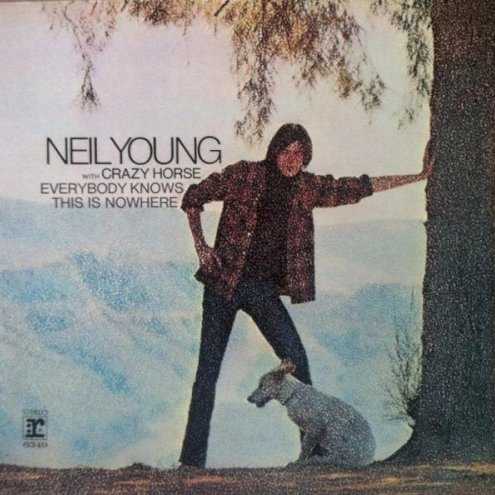 | Album: 2 of 43 Title: Everybody Knows This Is Nowhere Released: 1969-05-14 Tracks: 7 Duration: 40:30 Scroll: Up Down Top Bottom 25% 50% 75% Spotify Wikipedia Allmusic AlbumCover | 1 Cinnamon Girl (03:00) 2 Everybody Knows This Is Nowhere (02:28) 3 Round & Round (It Won’t Be Long) (05:53) 4 Down by the River (09:16) 5 The Losing End (When You’re On) (04:07) 6 Running Dry (Requiem for the Rockets) (05:36) 7 Cowgirl in the Sand (10:06) |
| Everybody Knows This Is Nowhere : Allmusic album Review : Neil Youngs second solo album, released only four months after his first, was nearly a total rejection of that polished effort. Though a couple of songs, "Round Round (It Wont Be Long)" and "The Losing End (When Youre On)," shared that albums country-folk style, they were altogether livelier and more assured. The difference was that, while Neil Young was a solo effort, Everybody Knows This Is Nowhere marked the beginning of Youngs recording association with Crazy Horse, the trio of Danny Whitten (guitar), Ralph Molina (drums), and Billy Talbot (bass) that Young had drawn from the struggling local Los Angeles group the Rockets. With them, Young quickly cut a set of loose, guitar-heavy rock songs -- "Cinnamon Girl," "Down by the River," and "Cowgirl in the Sand" -- that redefined him as a rock & roll artist. The songs were deliberately underwritten and sketchy as compositions, their lyrics more suggestive than complete, but that made them useful as frames on which to hang the extended improvisations ("River" and "Cowgirl" were each in the nine-to-ten-minute range) Young played with Crazy Horse and to reflect the ominous tone of his singing. Young lowered his voice from the near-falsetto employed on his debut to a more expressive range, and he sang with greater confidence, accompanied by Whitten and, on "Round Round," by Robin Lane. Everybody Knows This Is Nowhere was breathtakingly different when it appeared in May 1969, both for Young and for rock in general, and it reversed his commercial fortunes, becoming a moderate hit. (Youngs joining Crosby, Stills & Nash the month after its release didnt hurt his profile, of course.) A year and a half after its release, it became a gold album, and it has since gone platinum. And it set a musical pattern Young and his many musical descendants have followed ever since; almost 30 years later, he was still playing this sort of music with Crazy Horse, and a lot of contemporary bands were playing music clearly influenced by it. | ||
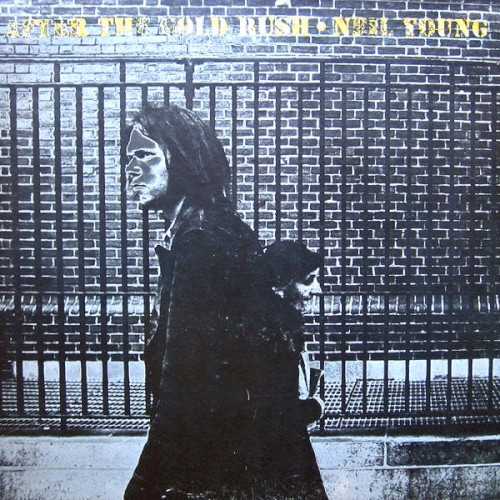 | Album: 3 of 43 Title: After the Gold Rush Released: 1970-09-19 Tracks: 11 Duration: 35:13 Scroll: Up Down Top Bottom 25% 50% 75% Spotify TrackSamples Wikipedia Allmusic AlbumCover | 1 Tell Me Why (02:58) 2 After the Gold Rush (03:46) 3 Only Love Can Break Your Heart (03:08) 4 Southern Man (05:32) 5 Till the Morning Comes (01:21) 6 Oh, Lonesome Me (03:50) 7 Don’t Let It Bring You Down (02:58) 8 Birds (02:33) 9 When You Dance I Can Really Love (04:05) 10 I Believe in You (03:28) 11 Cripple Creek Ferry (01:34) |
| After the Gold Rush : Allmusic album Review : In the 15 months between the release of Everybody Knows This Is Nowhere and After the Gold Rush, Neil Young issued a series of recordings in different styles that could have prepared his listeners for the differences between the two LPs. His two compositions on the Crosby, Stills, Nash & Young album Déjà Vu, "Helpless" and "Country Girl," returned him to the folk and country styles he had pursued before delving into the hard rock of Everybody Knows; two other singles, "Sugar Mountain" and "Oh, Lonesome Me," also emphasized those roots. But "Ohio," a CSNY single, rocked as hard as anything on the second album. After the Gold Rush was recorded with the aid of Nils Lofgren, a 17-year-old unknown whose piano was a major instrument, turning one of the few real rockers, "Southern Man" (which had unsparing protest lyrics typical of Phil Ochs), into a more stately effort than anything on the previous album and giving a classic tone to the title track, a mystical ballad that featured some of Youngs most imaginative lyrics and became one of his most memorable songs. But much of After the Gold Rush consisted of country-folk love songs, which consolidated the audience Young had earned through his tours and recordings with CSNY; its dark yet hopeful tone matched the tenor of the times in 1970, making it one of the definitive singer/songwriter albums, and it has remained among Youngs major achievements. | ||
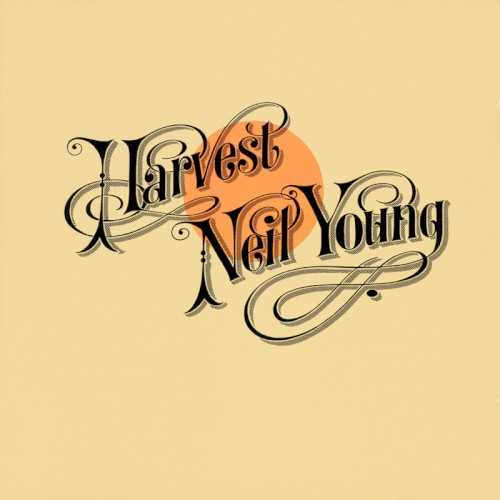 | Album: 4 of 43 Title: Harvest Released: 1972-02-14 Tracks: 10 Duration: 37:33 Scroll: Up Down Top Bottom 25% 50% 75% Spotify Wikipedia Allmusic AlbumCover | 1 Out on the Weekend (04:35) 2 Harvest (03:11) 3 A Man Needs a Maid (04:05) 4 Heart of Gold (03:07) 5 Are You Ready for the Country? (03:23) 6 Old Man (03:24) 7 There’s a World (02:59) 8 Alabama (04:02) 9 The Needle and the Damage Done (02:03) 10 Words (Between the Lines of Age) (06:40) |
| Harvest : Allmusic album Review : Neil Youngs most popular album, Harvest benefited from the delay in its release (it took 18 months to complete due to Youngs back injury), which whetted his audiences appetite, the disintegration of Crosby, Stills, Nash & Young (Youngs three erstwhile partners sang on the album, along with Linda Ronstadt and James Taylor), and most of all, a hit single. "Heart of Gold," released a month before Harvest, was already in the Top 40 when the LP hit the stores, and it soon topped the charts. Its fair to say, too, that Young simply was all-pervasive by this time: "Heart of Gold" was succeeded at number one by "A Horse with No Name" by America, which was a Young soundalike record. But successful as Harvest was (and it was the best-selling album of 1972), it has suffered critically from reviewers who see it as an uneven album on which Young repeats himself. Certainly, Harvest employs a number of jarringly different styles. Much of it is country-tinged, with Young backed by a new group dubbed the Stray Gators who prominently feature steel guitarist Ben Keith, though there is also an acoustic track, a couple of electric guitar-drenched rock performances, and two songs on which Young is accompanied by the London Symphony Orchestra. But the album does have an overall mood and an overall lyric content, and they conflict with each other: The mood is melancholic, but the songs mostly describe the longing for and fulfillment of new love. Young is perhaps most explicit about this on the controversial "A Man Needs a Maid," which is often condemned as sexist by people judging it on the basis of its title. In fact, the song contrasts the fears of committing to a relationship with simply living alone and hiring help, and it contains some of Youngs most autobiographical writing. Unfortunately, like "Theres a World," the song is engulfed in a portentous orchestration. Over and over, Young sings of the need for love in such songs as "Out on the Weekend," "Heart of Gold," and "Old Man" (a Top 40 hit), and the songs are unusually melodic and accessible. The rock numbers, "Are You Ready for the Country" and "Alabama," are in Youngs familiar style and unremarkable, and "Theres a World" and "Words (Between the Lines of Age)" are the most ponderous and overdone Young songs since "The Last Trip to Tulsa." But the love songs and the harrowing portrait of a friends descent into heroin addiction, "The Needle and the Damage Done," remain among Youngs most affecting and memorable songs. | ||
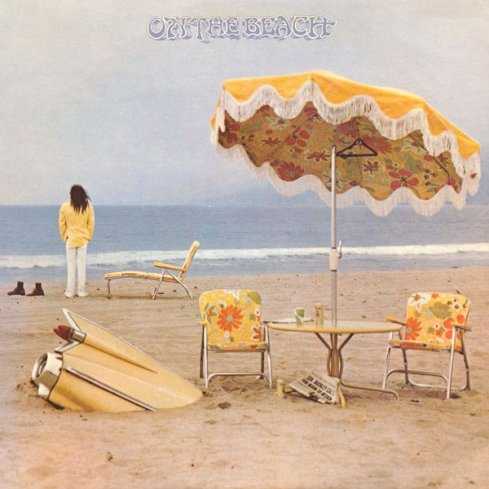 | Album: 5 of 43 Title: On the Beach Released: 1974-07-16 Tracks: 8 Duration: 39:36 Scroll: Up Down Top Bottom 25% 50% 75% Spotify Wikipedia Allmusic AlbumCover | 1 Walk On (02:41) 2 See the Sky About to Rain (05:02) 3 Revolution Blues (04:03) 4 For the Turnstiles (03:15) 5 Vampire Blues (04:14) 6 On the Beach (06:59) 7 Motion Pictures (04:23) 8 Ambulance Blues (08:56) |
| On the Beach : Allmusic album Review : Following the 1973 Time Fades Away tour, Neil Young wrote and recorded an Irish wake of a record called Tonights the Night and went on the road drunkenly playing its songs to uncomprehending listeners and hostile reviewers. Reprise rejected the record, and Young went right back and made On the Beach, which shares some of the ragged style of its two predecessors. But where Time was embattled and Tonight mournful, On the Beach was savage and, ultimately, triumphant. "Im a vampire, babe," Young sang, and he proceeded to take bites out of various subjects: threatening the lives of the stars who lived in L.A.s Laurel Canyon ("Revolution Blues"); answering back to Lynyrd Skynyrd, whose "Sweet Home Alabama" had taken him to task for his criticisms of the South in "Southern Man" and "Alabama" ("Walk On"); and rejecting the critics ("Ambulance Blues"). But the barbs were mixed with humor and even affection, as Young seemed to be emerging from the grief and self-abuse that had plagued him for two years. But the album was so spare and under-produced, its lyrics so harrowing, that it was easy to miss Youngs conclusion: he was saying goodbye to despair, not being overwhelmed by it. | ||
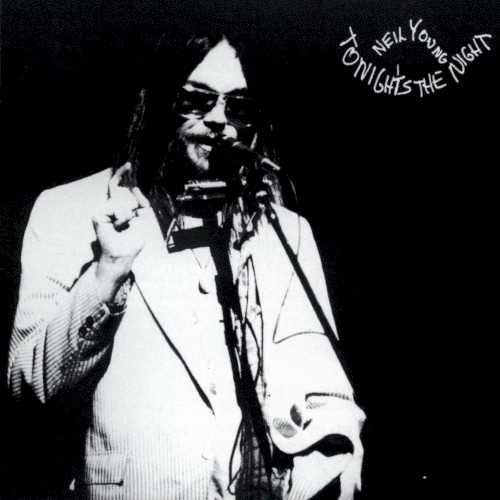 | Album: 6 of 43 Title: Tonight’s the Night Released: 1975-06-20 Tracks: 12 Duration: 44:56 Scroll: Up Down Top Bottom 25% 50% 75% Spotify Wikipedia Allmusic AlbumCover | 1 Tonight’s the Night (04:41) 2 Speakin’ Out (04:57) 3 World on a String (02:25) 4 Borrowed Tune (03:26) 5 Come On Baby Let’s Go Downtown (03:36) 6 Mellow My Mind (03:11) 7 Roll Another Number (for the Road) (03:04) 8 Albuquerque (04:01) 9 New Mama (02:13) 10 Lookout Joe (03:54) 11 Tired Eyes (04:34) 12 Tonight’s the Night, Part II (04:52) |
| Tonight’s the Night : Allmusic album Review : Written and recorded in 1973 shortly after the death of roadie Bruce Berry, Neil Youngs second close associate to die of a heroin overdose in six months (the first was Crazy Horse guitarist Danny Whitten), Tonights the Night was Youngs musical expression of grief, combined with his rejection of the stardom he had achieved in the late 60s and early 70s. The title track, performed twice, was a direct narrative about Berry: "Bruce Berry was a working man/He used to load that Econoline van." Whitten was heard singing "Come On Baby Lets Go Downtown," a live track recorded years earlier. Elsewhere, Young frequently referred to drug use and used phrases that might have described his friends, such as the chorus of "Tired Eyes," "He tried to do his best, but he could not." Performing with the remains of Crazy Horse, bassist Billy Talbot and drummer Ralph Molina, along with Nils Lofgren (guitar and piano) and Ben Keith (steel guitar), Young performed in the ragged manner familiar from Time Fades Away -- his voice was often hoarse and he strained to reach high notes, while the playing was loose, with mistakes and shifting tempos. But the style worked perfectly for the material, emphasizing the emotional tone of Youngs mourning and contrasting with the polished sound of CSNY and Harvest that Young also disparaged. He remained unimpressed with his commercial success, noting in "World on a String," "The world on a string/Doesnt mean anything." In "Roll Another Number," he said he was "a million miles away/From that helicopter day" when he and CSN had played Woodstock. And in "Albuquerque," he said he had been "starvin to be alone/Independent from the scene that Ive known" and spoke of his desire to "find somewhere where they dont care who I am." Songs like "Speakin Out" and "New Mama" seemed to find some hope in family life, but Tonights the Night did not offer solutions to the personal and professional problems it posed. It was the work of a man trying to turn his torment into art and doing so unflinchingly. Depending on which story you believe, Reprise rejected it or Young withdrew it from its scheduled release at the start of 1974 after touring with the material in the U.S. and Europe. In 1975, after a massive CSNY tour, Young at the last minute dumped a newly recorded album and finally put Tonights the Night out instead. Though it did not become one of his bigger commercial successes, the album was immediately recognized as a unique masterpiece by critics, and it has continued to be ranked as one of the greatest rock & roll albums ever made. | ||
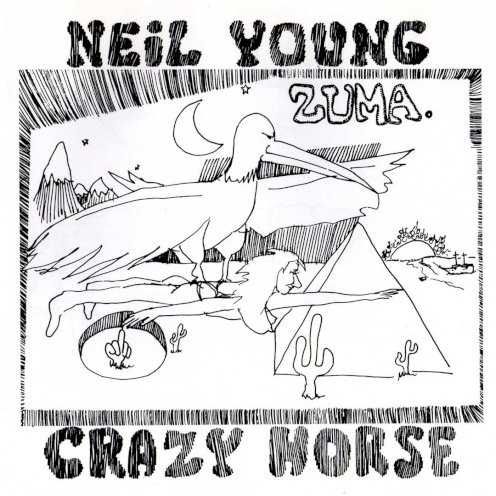 | Album: 7 of 43 Title: Zuma Released: 1975-11-10 Tracks: 9 Duration: 36:32 Scroll: Up Down Top Bottom 25% 50% 75% Spotify Wikipedia Allmusic AlbumCover | 1 Don’t Cry No Tears (02:35) 2 Danger Bird (06:54) 3 Pardon My Heart (03:47) 4 Lookin’ for a Love (03:16) 5 Barstool Blues (03:00) 6 Stupid Girl (03:12) 7 Drive Back (03:33) 8 Cortez the Killer (07:31) 9 Through My Sails (02:40) |
| Zuma : Allmusic album Review : Having apparently exorcised his demons by releasing the cathartic Tonights the Night, Neil Young returned to his commercial strengths with Zuma (named after Zuma Beach in Los Angeles, where he now owned a house). Seven of the albums nine songs were recorded with the reunited Crazy Horse, in which rhythm guitarist Frank Sampedro had replaced the late Danny Whitten, but there were also nods to other popular Young styles in "Pardon My Heart," an acoustic song that would have fit on Harvest, his most popular album, and "Through My Sails," retrieved from one of Crosby, Stills, Nash & Youngs abortive recording sessions. Young had abandoned the ragged, first-take approach of his previous three albums, but Crazy Horse would never be a polished act, and the music had a lively sound well-suited to the songs, which were some of the most melodic, pop-oriented tunes Young had crafted in years, though they were played with an electric-guitar-drenched rock intensity. The overall theme concerned romantic conflict, with lyrics that lamented lost love and sometimes longed for a return ("Pardon My Heart" even found Young singing, "I dont believe this song"), though the overall conclusion, notably in such catchy songs as "Dont Cry No Tears" and "Lookin for a Love," was to move on to the next relationship. But the albums standout track (apparently the only holdover from an early intention to present songs with historical subjects) was the seven-and-a-half-minute epic "Cortez the Killer," a commentary on the Spanish conqueror of Latin America that served as a platform for Youngs most extensive guitar soloing since his work on Everybody Knows This Is Nowhere. | ||
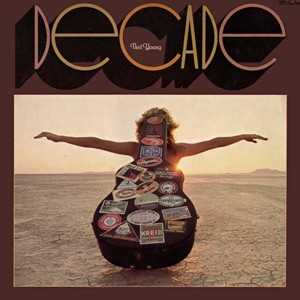 | Album: 8 of 43 Title: Decade Released: 1977 Tracks: 35 Duration: 2:25:05 Scroll: Up Down Top Bottom 25% 50% 75% Spotify Wikipedia Allmusic AlbumCover | 1 Down to the Wire (02:31) 2 Burned (02:17) 3 Mr. Soul (02:51) 4 Broken Arrow (06:14) 5 Expecting to Fly (03:46) 6 Sugar Mountain (05:46) 7 I Am a Child (02:22) 8 The Loner (03:53) 9 The Old Laughing Lady (05:40) 10 Cinnamon Girl (03:00) 11 Down by the River (09:02) 12 Cowgirl in the Sand (10:06) 13 I Believe in You (03:30) 14 After the Gold Rush (03:46) 15 Southern Man (05:31) 16 Helpless (03:34) 1 Ohio (03:02) 2 Soldier (02:28) 3 Old Man (03:24) 4 A Man Needs a Maid (04:00) 5 Harvest (03:11) 6 Heart of Gold (03:07) 7 Star of Bethlehem (02:42) 8 The Needle and the Damage Done (02:03) 9 Tonight’s the Night, Part 1 (04:41) 10 Tired Eyes (04:33) 11 Walk On (02:41) 12 For the Turnstiles (03:01) 13 Winterlong (03:08) 14 Deep Forbidden Lake (03:41) 15 Like a Hurricane (08:17) 16 Love Is a Rose (02:16) 17 Cortez the Killer (07:31) 18 Campaigner (03:30) 19 Long May You Run (03:48) |
| Decade : Allmusic album Review : Given the quirkiness of Neil Youngs recording career, with its frequent cancellations of releases and last-minute rearrangements of material, it is a relief to report that this two-disc compilation is so conventional and so satisfying. A 35-track selection of the best of Youngs work between 1966 and 1976, it includes songs performed by Buffalo Springfield, Crosby, Stills, Nash & Young, and the Stills-Young Band, as well as solo work. In addition to five unreleased songs, Decade offers such key tracks as the Springfields "Mr. Soul," "Broken Arrow," and "I Am a Child"; "Sugar Mountain," a song that had appeared only as a single before; "Cinnamon Girl," "Down by the River," and "Cowgirl in the Sand" from Everybody Knows This Is Nowhere; "Southern Man" and the title track from After the Gold Rush; and "Old Man" and the chart-topping "Heart of Gold" from Harvest. This is the material that built Youngs reputation between 1966 and 1972, although he is more idiosyncratic with the later material, including the blockbusters "Like a Hurricane" and "Cortez the Killer" but mixing in more unreleased recordings as the set draws to a close. He seems intent on making the album a listenable one that will appeal to a broad base of fans, and he succeeds despite the exclusion of much of the harrowing work of 1973-1975. Nevertheless, the album is an ideal sampler for new listeners, and since there is no one-disc Young compilation covering any significant portion of his career, this lengthy chronicle is the place to start. | ||
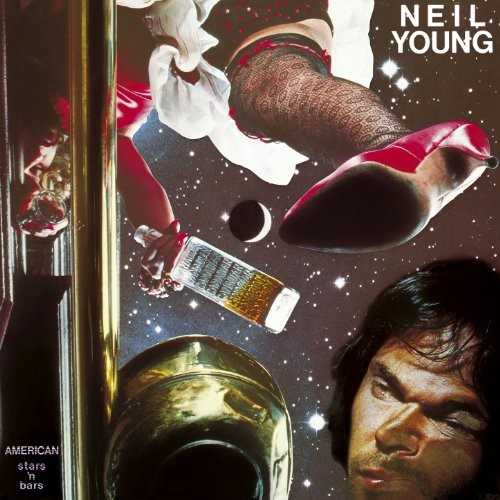 | Album: 9 of 43 Title: American Stars n Bars Released: 1977 Tracks: 9 Duration: 38:13 Scroll: Up Down Top Bottom 25% 50% 75% Spotify Wikipedia Allmusic AlbumCover | 1 The Old Country Waltz (03:00) 2 Saddle Up the Palomino (03:01) 3 Hey Babe (03:37) 4 Hold Back the Tears (04:20) 5 Bite the Bullet (03:36) 6 Star of Bethlehem (02:42) 7 Will to Love (07:11) 8 Like a Hurricane (08:20) 9 Homegrown (02:21) |
| American Stars 'n Bars : Allmusic album Review : Neil Young made a point of listing the recording dates of the songs on American Stars n Bars; the dates even appeared on the LP labels. They revealed that the songs had been cut at four different sessions dating back to 1974. But even without such documentation, it would have been easy to tell that the album was a stylistic hodgepodge, its first side consisting of country-tinged material featuring steel guitar and fiddle, plus backup vocals from Linda Ronstadt and the then-unknown Nicolette Larson, while the four songs on the second side varied from acoustic solo numbers like "Will to Love" to raging rockers such as "Like a Hurricane." Just as apparent was the albums unevenness: side one consisted of lightweight compositions, while side two had more ambitious ones, with "Will to Love," for example, extending the romantic metaphor of a salmon swimming upstream across seven minutes. The albums saving grace was "Like a Hurricane," one of Youngs classic hard rock songs and guitar workouts, and a perennial concert favorite. Without it, American Stars n Bars would have been one of Youngs least memorable albums, and since it turned up the following year on the compilation Decade, the LP was rendered inessential. | ||
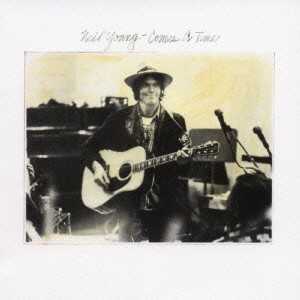 | Album: 10 of 43 Title: Comes a Time Released: 1978-10-21 Tracks: 10 Duration: 37:09 Scroll: Up Down Top Bottom 25% 50% 75% Spotify Wikipedia Allmusic AlbumCover | 1 Goin’ Back (04:41) 2 Comes a Time (03:06) 3 Look Out for My Love (04:05) 4 Lotta Love (02:38) 5 Peace of Mind (04:09) 6 Human Highway (03:09) 7 Already One (04:53) 8 Field of Opportunity (03:09) 9 Motorcycle Mama (03:10) 10 Four Strong Winds (04:05) |
| Comes a Time : Allmusic album Review : Six and a half years later, Comes a Time finally was the Neil Young album for the millions of fans who had loved Harvest, an acoustic-based record with country overtones and romantic, autobiographical lyrics, and many of those fans returned to the fold, enough to make Comes a Time Youngs first Top Ten album since Harvest. He signaled the albums direction with the leadoff track, "Goin Back," and its retrospective theme augmented with an orchestral backup and the deliberate beat familiar from his number one hit "Heart of Gold." Of course, Young remained sly about this retrenchment. "I feel like goin back," he sang, but added, "back where theres nowhere to stay." Doubtless he had no intention of staying with this style, but for the length of the album, melodies, love lyrics, lush arrangements, and steel guitar solos dominated, and Youngs vocals were made more accessible by being paired with Nicolette Larsons harmonies. Larsons own version of Youngs "Lotta Love," released shortly after the one heard here, became a Top Ten hit single. Other highlights included the reflective "Already One," which treats the unusual subject of the nature of a divorced family, the ironic "Field of Opportunity," and a cover of Ian Tysons folk standard "Four Strong Winds" (a country Top Ten hit for Bobby Bare in 1965). | ||
![Allmusic album Review : Rust Never Sleeps, its aphoristic title drawn from an intended advertising slogan, was an album of new songs, some of them recorded on Neil Youngs 1978 concert tour. His strongest collection since Tonights the Night, its obvious antecedent was Bob Dylans Bringing It All Back Home, and, as Dylan did, Young divided his record into acoustic and electric sides while filling his songs with wildly imaginative imagery. The leadoff track, "My My, Hey Hey (Out of the Blue)" (repeated in an electric version at albums end as "Hey Hey, My My [Into the Black]" with slightly altered lyrics), is the most concise and knowing description of the entertainment industry ever written; it was followed by "Thrasher," which describes Youngs parallel artistic quest in an extended metaphor that also reflected the albums overall theme -- the inevitability of deterioration and the challenge of overcoming it. Young then spent the rest of the album demonstrating that his chief weapons against rusting were his imagination and his daring, creating an archetypal album that encapsulated his many styles on a single disc with great songs -- in particular the remarkable "Powderfinger" -- unlike any he had written before. rust_never_sleeps](../../images/neil_young-rust_never_sleeps.jpg) | Album: 11 of 43 Title: Rust Never Sleeps Released: 1979-06-22 Tracks: 9 Duration: 38:26 Scroll: Up Down Top Bottom 25% 50% 75% Spotify Wikipedia Allmusic AlbumCover | 1 My My, Hey Hey (Out of the Blue) (03:47) 2 Thrasher (05:40) 3 Ride My Llama (02:30) 4 Pocahontas (03:24) 5 Sail Away (03:50) 6 Powderfinger (05:30) 7 Welfare Mothers (03:49) 8 Sedan Delivery (04:39) 9 Hey Hey, My My (Into the Black) (05:12) |
| Rust Never Sleeps : Allmusic album Review : Rust Never Sleeps, its aphoristic title drawn from an intended advertising slogan, was an album of new songs, some of them recorded on Neil Youngs 1978 concert tour. His strongest collection since Tonights the Night, its obvious antecedent was Bob Dylans Bringing It All Back Home, and, as Dylan did, Young divided his record into acoustic and electric sides while filling his songs with wildly imaginative imagery. The leadoff track, "My My, Hey Hey (Out of the Blue)" (repeated in an electric version at albums end as "Hey Hey, My My [Into the Black]" with slightly altered lyrics), is the most concise and knowing description of the entertainment industry ever written; it was followed by "Thrasher," which describes Youngs parallel artistic quest in an extended metaphor that also reflected the albums overall theme -- the inevitability of deterioration and the challenge of overcoming it. Young then spent the rest of the album demonstrating that his chief weapons against rusting were his imagination and his daring, creating an archetypal album that encapsulated his many styles on a single disc with great songs -- in particular the remarkable "Powderfinger" -- unlike any he had written before. | ||
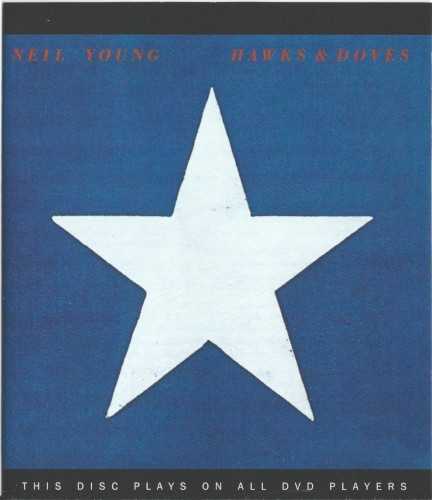 | Album: 12 of 43 Title: Hawks & Doves Released: 1980-11-03 Tracks: 9 Duration: 30:23 Scroll: Up Down Top Bottom 25% 50% 75% Spotify TrackSamples Wikipedia Allmusic AlbumCover | 1 Little Wing (02:15) 2 The Old Homestead (07:42) 3 Lost in Space (04:21) 4 Captain Kennedy (02:51) 5 Stayin’ Power (02:22) 6 Coastline (02:30) 7 Union Man (02:13) 8 Comin’ Apart at Every Nail (02:39) 9 Hawks & Doves (03:27) |
| Hawks & Doves : Allmusic album Review : Following the triumph of Rust Never Sleeps, Hawks & Doves benefited from the enormous critical goodwill Neil Young had amassed, though fans and critics nevertheless were baffled by its set of obscure acoustic and country-tinged songs. The seven-plus-minute "The Old Homestead" (copyright 1974) was interpreted by some as an allegory for Youngs relationship to CSNY, perhaps because that was the only way to make any sense of the most mysterious Young lyric since "The Last Trip to Tulsa." In retrospect, now that its known Young was distracted by domestic medical concerns while working on the album, its theme of perseverance in the face of adversity, both in a personal context of family commitment ("Stayin Power," "Coastline"), and in a national context of hard work and patriotism ("Union Man," "Comin Apart at Every Nail," "Hawks & Doves") seems more apparent, as does the sense that Young may have been trying to fulfill his recording contract (even with the inclusion of trunk songs like "The Old Homestead," the album runs less than half an hour) while devoting a bare minimum of his time and attention to the effort. The result is correspondingly slight. | ||
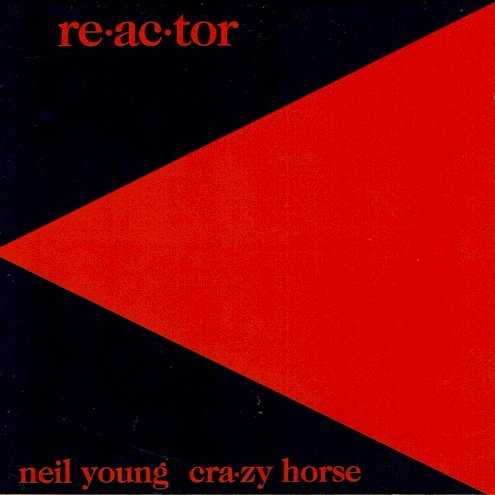 | Album: 13 of 43 Title: Re·ac·tor Released: 1981-10-28 Tracks: 8 Duration: 39:31 Scroll: Up Down Top Bottom 25% 50% 75% Spotify Wikipedia Allmusic AlbumCover | 1 Opera Star (03:36) 2 Surfer Joe and Moe the Sleaze (04:21) 3 T‐Bone (09:21) 4 Get Back on It (02:19) 5 Southern Pacific (04:14) 6 Motor City (03:13) 7 Rapid Transit (04:41) 8 Shots (07:45) |
| Re·ac·tor : Allmusic album Review : Neil Young employs Crazy Horse to help him bash out a guitar-drenched hard rock set made up of thrown-together material. The group plays fiercely, as usual, but the lyrics are sketchy, seemingly improvised (the nadir is the nine-minute "T-Bone," which consists of the lines "Got mashed potato/Aint got no t-bone" repeated over and over), and frequently cranky, as in "Motor City," which finds Young criticizing Japanese cars, and "Rapid Transit," which takes a belated swipe at new wave music while sounding like second-rate Talking Heads. For the second album in a row, Young seems to be just fulfilling his one-album-a-year record contract. The exception is the album-closing "Shots" (written by 1978), a more substantive and threatening song given a riveting performance. Later, it would be revealed that Young was finding time for his music while giving most of his attention to caring for his disabled son. Still, he might have been better advised to have suspended record-making for a few years instead of turning out half-baked efforts like this one. | ||
 | Album: 14 of 43 Title: Trans Released: 1982-12-29 Tracks: 9 Duration: 41:04 Scroll: Up Down Top Bottom 25% 50% 75% Spotify TrackSamples Wikipedia Allmusic AlbumCover | 1 Little Thing Called Love (03:09) 2 Computer Age (05:21) 3 We R in Control (03:30) 4 Transformer Man (03:19) 5 Computer Cowboy (a.k.a. Syscrusher) (04:08) 6 Hold on to Your Love (03:25) 7 Sample and Hold (05:10) 8 Mr. Soul (03:15) 9 Like an Inca (09:43) |
| Trans : Allmusic album Review : When it was released, Trans was Neil Youngs most baffling album. He had employed a vocoder to synthesize his voice on five of the albums nine tracks, resulting in disembodied singing, the lyrics nearly impossible to decipher without the lyric sheet. And even when you read the words, "Computer Age," "We R in Control," "Transformer Man," "Computer Cowboy," and "Sample and Hold" seemed like a vague mishmash of high-tech jargon. Later, Young would reveal that some of the songs expressed a theme of attempted communication with his disabled son, and in that context, lines like "I stand by you" and "So many things still left to do/But we havent made it yet" seemed clearer. But the vocoder, which robbed Youngs voice of its dynamics and phrasing, still kept the songs from being as moving as they were intended to be. And despite the crisp dance beats and synthesizers, the music sounded less like new Kraftwerk than like old Devo. A few more conventional Young songs (left over from an earlier rejected album) seemed out of place. Trans had a few good songs, notably "Sample and Hold" (which seemed to be about a computer dating service for robots), a remake of "Mr. Soul," and "Like an Inca" (an intended cross between "Like a Hurricane" and "Cortez the Killer"?), but on the whole it was an idea that just didnt work. | ||
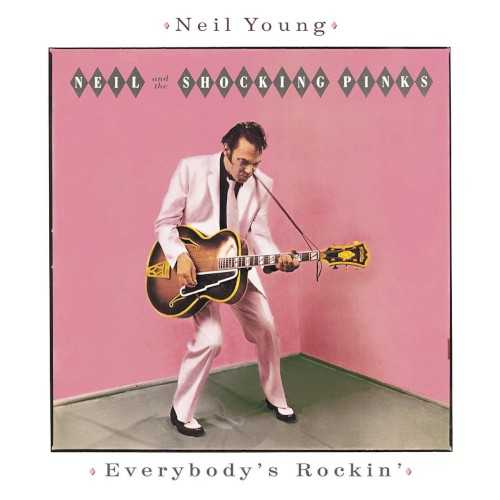 | Album: 15 of 43 Title: Everybody’s Rockin’ Released: 1983-08 Tracks: 10 Duration: 24:49 Scroll: Up Down Top Bottom 25% 50% 75% Spotify Wikipedia Allmusic AlbumCover | 1 Betty Lous Got a New Pair of Shoes (03:01) 2 Rainin in My Heart (02:11) 3 Payola Blues (03:09) 4 Wonderin (02:59) 5 Kinda Fonda Wanda (01:50) 6 Jellyroll Man (02:00) 7 Bright Lights, Big City (02:18) 8 Cry, Cry, Cry (02:39) 9 Mystery Train (02:47) 10 Everybodys Rockin (01:55) |
| Everybody’s Rockin’ : Allmusic album Review : By following the hi-tech Trans after only seven months with a rockabilly album, Neil Young baffled his audience. Just as he had followed the sales peak of Harvest in 1972 with a series of challenging, uncommercial albums, Young had now dissipated the commercial and critical acceptance he had enjoyed with 1979s Rust Never Sleeps with a series of mediocre albums and inexplicable genre exercises. Everybodys Rockin, credited to "Neil & the Shocking Pinks," represented the nadir of this attempted career suicide. Running less than 25 minutes, it found Young covering early rock evergreens like "Betty Lous Got a New Pair of Shoes" and writing a few songs in the same vein ("Kinda Fonda Wanda"). If he had presented this as a mini-album at a discount price, it would have been easier to enjoy the joke Young seemed to intend. As it was, fans who already had their doubts about Young dropped off the radar screen; Everybodys Rockin was his lowest-charting album since his 1969 solo debut, and he didnt release another album for two years (his longest break ever between records). | ||
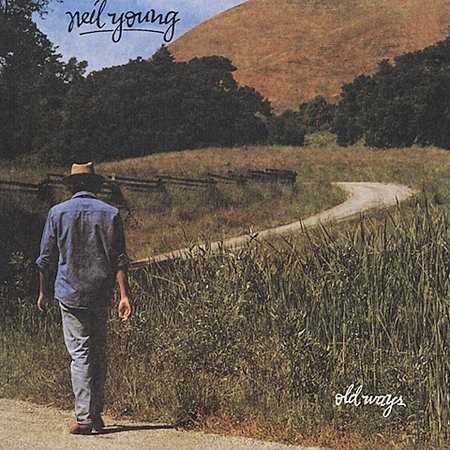 | Album: 16 of 43 Title: Old Ways Released: 1985-08 Tracks: 10 Duration: 36:43 Scroll: Up Down Top Bottom 25% 50% 75% Spotify Wikipedia Allmusic AlbumCover | 1 The Wayward Wind (03:12) 2 Get Back to the Country (02:50) 3 Are There Any More Real Cowboys? (03:03) 4 Once an Angel (03:55) 5 Misfits (05:07) 6 California Sunset (02:56) 7 Old Ways (03:08) 8 My Boy (03:37) 9 Bound for Glory (05:48) 10 Where Is the Highway Tonight? (03:02) |
| Old Ways : Allmusic album Review : In 1984, Geffen Records sued Neil Young on the grounds that he had submitted uncharacteristic, uncommercial records to the label. By the time a settlement had been reached, Young had been on the road with a country band called the International Harvesters for over a year and recorded a revamped version of Old Ways, a 1982 recording originally rejected by Geffen that was cut in the style of Harvest and Comes a Time, but with a stronger country leaning. Young depends heavily on friends, especially for vocals -- Waylon Jennings sings harmony on six out of the ten tracks, and one of the others is a duet with Willie Nelson. Though populated by cowboys and country references, Youngs take on the genre is typically idiosyncratic, including a reworked version of his autobiography in "Get Back to the Country," a cover of the 1956 Gogi Grant hit "The Wayward Wind," and the uncategorizable "Misfits," which portrays astronauts watching Muhammad Ali fights on television in space. Old Ways is not a great Neil Young album and at the time of its release served to alienate him even further from his audience, but it has its moments. | ||
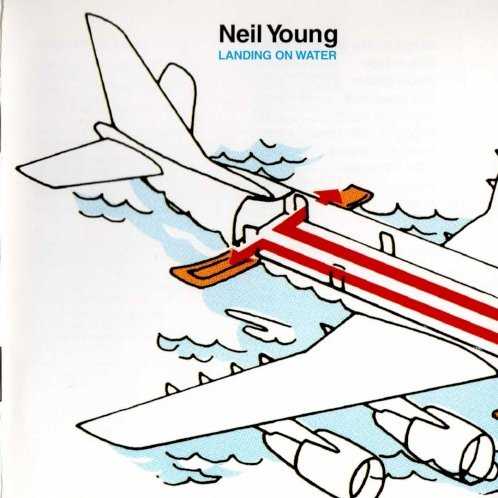 | Album: 17 of 43 Title: Landing on Water Released: 1986 Tracks: 10 Duration: 40:20 Scroll: Up Down Top Bottom 25% 50% 75% Spotify Wikipedia Allmusic AlbumCover | 1 Weight of the World (03:44) 2 Violent Side (04:25) 3 Hippie Dream (04:16) 4 Bad News Beat (03:20) 5 Touch the Night (04:32) 6 People on the Street (04:35) 7 Hard Luck Stories (04:11) 8 I Got a Problem (03:21) 9 Pressure (02:46) 10 Drifter (05:04) |
| Landing on Water : Allmusic album Review : Backed only by co-producer Danny Kortchmar on guitar and Steve Jordan on drums, with all three playing synthesizers, Neil Young turns in an album that attempts to mix the raunchy rock thrust of his Crazy Horse-style music with contemporary trends in pop, especially the tendency to turn the drums way up in the mix. Its an uneasy combination in which Jordans forceful drumming dominates the tracks, with Youngs vocals nearly buried. But that only means that the production has ruined a group of songs few of which were any good anyway. The only one that offers the promise of being one of Youngs better efforts is "Hippie Dream," a sober criticism of what became of 60s idealism in general and Youngs erstwhile bandmate David Crosby in particular. But if Landing on Water was not a good album, at least it seemed to point Young away from the stylistic dabbling of his last three albums and back toward the kind of rock he did best, and at least some of his fans returned as a result, giving him a slight uptick in sales. | ||
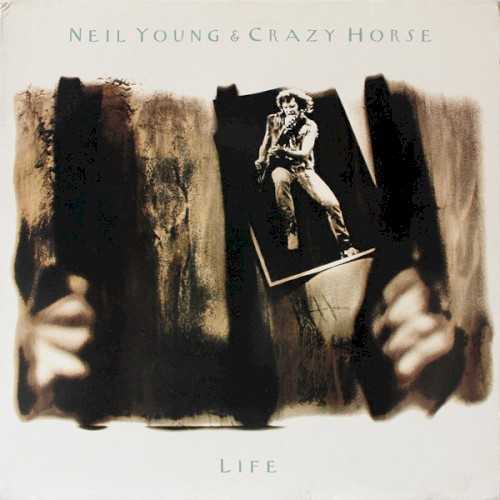 | Album: 18 of 43 Title: Life Released: 1987-06-30 Tracks: 9 Duration: 40:40 Scroll: Up Down Top Bottom 25% 50% 75% Spotify Wikipedia Allmusic AlbumCover | 1 Mideast Vacation (04:22) 2 Long Walk Home (04:56) 3 Around the World (05:28) 4 Inca Queen (08:01) 5 Too Lonely (02:49) 6 Prisoners of Rock ’n’ Roll (03:13) 7 Cryin’ Eyes (02:52) 8 When Your Lonely Heart Breaks (05:17) 9 We Never Danced (03:38) |
| Life : Allmusic album Review : In the fall of 1978, Neil Young undertook a North American tour with Crazy Horse, then added overdubs to new songs recorded on the tour for one of his best albums, Rust Never Sleeps. In the fall 1986, he did the same thing, but Life, Youngs first album with Crazy Horse since 1981s Re-ac-tor, was not one of his best albums. It was, however, better than most of the other albums he had made in the 1980s, and it was the first really interesting album hed made in a long time. Despite the return to Crazy Horse, Young continued to use some of the production techniques from Landing on Water, especially the loud drums and the synthesizers. But he mixed things up, including acoustic-based songs such as "Long Walk Home" (which recalled "After the Gold Rush") and "Inca Queen" (the third in his series of long, atmospheric songs about the Incas) and rockers like "Prisoners of Rock n Roll." The last, with its attacks on "record company clowns" and chorus "thats why we dont want to be good," seemed intended as the theme song for the Rusted-Out Garage Tour on which it was performed and served as a reminder that Young was still at odds with Geffen Records, which he left after releasing this album. Despite the criticism he had endured for his support of President Reagans military buildup, Young had foreign policy on his mind in the action-movie-in-song "Mideast Vacation" and in "Long Walk Home," which addressed military misadventures from Vietnam to Beirut. It could be argued that Young was repeating himself on much of this material and that the album was typically uneven. But Life was an encouraging step back to the tried and true for an exploratory artist who finally seemed to have realized that he had experimented too much for his own good. | ||
 | Album: 19 of 43 Title: This Notes for You Released: 1988-04-12 Tracks: 10 Duration: 39:21 Scroll: Up Down Top Bottom 25% 50% 75% Spotify Wikipedia Allmusic AlbumCover | 1 Ten Men Workin’ (06:28) 2 This Note’s for You (02:06) 3 Coupe de Ville (04:18) 4 Life in the City (03:13) 5 Twilight (05:54) 6 Married Man (02:38) 7 Sunny Inside (02:37) 8 Can’t Believe Your Lyin’ (02:58) 9 Hey Hey (03:05) 10 One Thing (06:00) |
| This Note's for You : Allmusic album Review : A collective groan from Neil Young fans could be heard when it was announced that, as his return to Reprise Records, Young was engaging in yet another genre experiment, this time recording blues and R&B with a six-piece horn section. If Landing on Water and Life had been lackluster, at least they hadnt been as embarrassing as Youngs forays into rockabilly (Everybodys Rockin) and techno (Trans). And if you took This Notes for You on its own genre terms, it could be just as laughable. A song like "Sunny Inside," with its marching rhythm and charging horn charts, seemed to demand a forceful, gritty singer on the order of Wilson Pickett, and Youngs watery tenor just didnt cut it. But the album was only half up-tempo numbers; the other half was bluesy ballads for which Youngs singing was effective and on which he sounded more personally involved than he had in years. And even on the rockers, his sense of humor often carried the day. This Notes for You was the best of Youngs stylistic side trips because it was the only one in which the style augmented his own instead of overwhelming him. The songs were mediocre, but the playing was spirited. The album earned much better reviews than Young had gotten lately, largely because critics tend to stand in awe of the blues in whatever form it appears. And Young got further kudos due to his contretemps with MTV when the video channel first declined to program a clip for the title song because it featured parodies of popular MTV artists and commercial sponsors, then caved in and named it Best Video of the Year. Lost in all that hoopla, however, was that record buyers never came to the party. This Notes for You was another commercial failure for Young, and it was apparent that, to lure back his audience, he would have to go back to making the kind of music his fans had liked a decade before. | ||
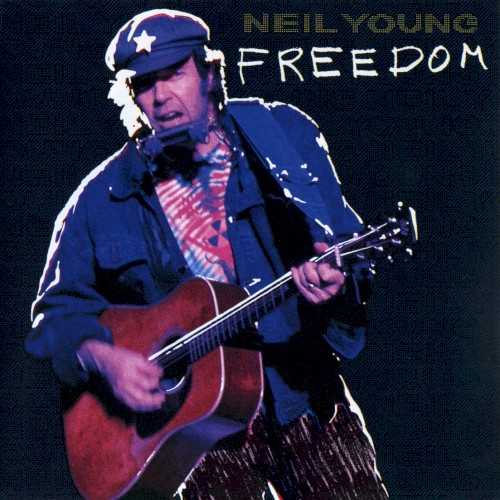 | Album: 20 of 43 Title: Freedom Released: 1989-10-02 Tracks: 12 Duration: 1:01:02 Scroll: Up Down Top Bottom 25% 50% 75% Spotify TrackSamples Allmusic AlbumCover | 1 Rockin’ in the Free World (03:39) 2 Crime in the City (Sixty to Zero, Part I) (08:44) 3 Don’t Cry (04:15) 4 Hangin’ on a Limb (04:19) 5 Eldorado (06:05) 6 The Ways of Love (04:29) 7 Someday (05:42) 8 On Broadway (04:59) 9 Wrecking Ball (05:09) 10 No More (06:06) 11 Too Far Gone (02:48) 12 Rockin’ in the Free World (04:42) |
| Freedom : Allmusic album Review : Neil Young is famous for scrapping completed albums and substituting hastily recorded ones in radically different styles. Freedom, which was a major critical and commercial comeback after a decade that had confused reviewers and fans, seemed to be a selection of the best tracks from several different unissued Young projects. First and foremost was a hard rock album like the material heard on Youngs recent EP, Eldorado (released only in the Far East), several of whose tracks were repeated on Freedom. On these songs -- especially "Dont Cry," which sounded like a song about divorce, and a cover of the old Drifters hit "On Broadway" that he concluded by raving about crack -- Young played distorted electric guitar over a rhythm section in an even more raucous fashion than that heard on his Crazy Horse records. Second was a follow-up to Youngs previous album, This Notes for You, which had featured a six-piece horn section. They were back on "Crime in the City" and "Someday," though these lengthy songs, each of which contained a series of seemingly unrelated, mood-setting verses, were more reminiscent of songs like Bob Dylans "All Along the Watchtower" than of the soul standards that inspired the earlier album. Third, there were tracks that harked back to acoustic-based, country-tinged albums like Harvest and Comes a Time, including "Hangin on a Limb" and "The Ways of Love," two songs on which Young dueted with Linda Ronstadt. There was even a trunk (or, more precisely, a drunk) song, "Too Far Gone," which dated from Youngs inebriated Stars n Bars period in the 70s. While one might argue that this variety meant few Young fans would be completely pleased with the album, what made it all work was that Young had once again written a great bunch of songs. The romantic numbers were carefully and sincerely written. The long imagistic songs were evocative without being obvious. And bookending the album were acoustic and electric versions of one of Youngs great anthems, "Rockin in the Free World," a song that went a long way toward restoring his political reputation (which had been badly damaged when he praised President Reagans foreign policy) by taking on hopelessness with a sense of moral outrage and explicitly condemning President Bushs domestic policy. Freedom was the album Neil Young fans knew he was capable of making, but feared he would never make again. | ||
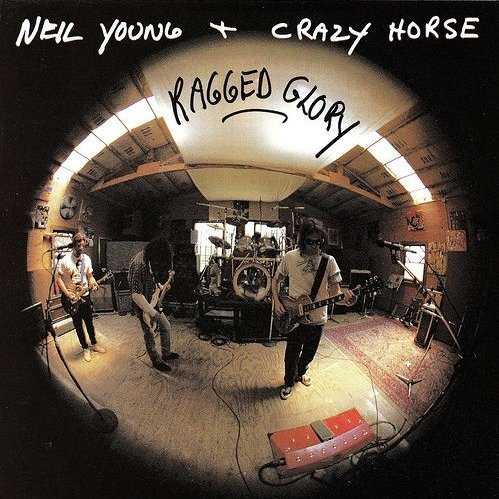 | Album: 21 of 43 Title: Ragged Glory Released: 1990-09-10 Tracks: 10 Duration: 1:02:42 Scroll: Up Down Top Bottom 25% 50% 75% Spotify Allmusic AlbumCover | 1 Country Home (07:06) 2 White Line (02:57) 3 F*!#in’ Up (05:54) 4 Over and Over (08:28) 5 Love to Burn (10:00) 6 Farmer John (04:14) 7 Mansion on the Hill (04:48) 8 Days That Used to Be (03:42) 9 Love and Only Love (10:18) 10 Mother Earth (Natural Anthem) (05:11) |
| Ragged Glory : Allmusic album Review : Having re-established his reputation with the musically varied, lyrically enraged Freedom, Neil Young returned to being the lead guitarist of Crazy Horse for the musically homogenous, lyrically hopeful Ragged Glory. The albums dominant sound was made by Youngs noisy guitar, which bordered on and sometimes slipped over into distortion, while Crazy Horse kept up the songs bright tempos. Despite the volume, the tunes were catchy, with strong melodies and good choruses, and they were given over to love, humor, and warm reminiscence. They were also platforms for often extended guitar excursions: "Love to Burn" and "Love and Only Love" ran over ten minutes each, and the album as a whole lasted nearly 63 minutes with only ten songs. Much about the record had a retrospective feel -- the first two tracks, "Country Home" and "White Line," were newly recorded versions of songs Young had played with Crazy Horse but never released in the 70s; "Mansion on the Hill," the albums most accessible track, celebrated a place where "psychedelic music fills the air" and "peace and love live there still"; there was a cover of the Premiers garage rock oldie "Farmer John"; and "Days That Used to Be," in addition to its backward-looking theme, borrowed the melody from Bob Dylans "My Back Pages" (by way of the Byrds arrangement), while "Mother Earth (Natural Anthem)" was the folk standard "The Water Is Wide" with new, environmentally aware lyrics. Young was not generally known as an artist who evoked the past this much, but if he could extend his creative rebirth with music this exhilarating, no one was likely to complain. | ||
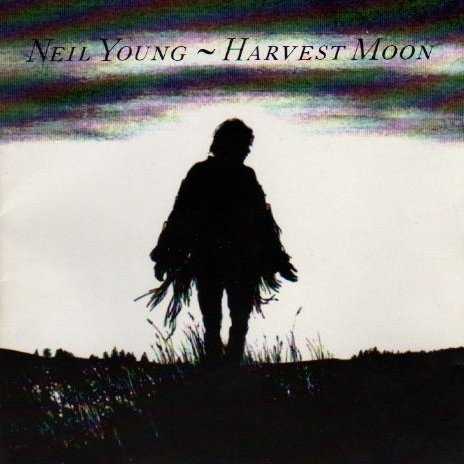 | Album: 22 of 43 Title: Harvest Moon Released: 1992-10-27 Tracks: 10 Duration: 51:56 Scroll: Up Down Top Bottom 25% 50% 75% Spotify TrackSamples Allmusic AlbumCover | 1 Unknown Legend (04:33) 2 From Hank to Hendrix (05:17) 3 You and Me (03:45) 4 Harvest Moon (05:03) 5 War of Man (05:43) 6 One of These Days (04:57) 7 Such a Woman (04:37) 1 Old King (02:56) 2 Dreamin’ Man (04:36) 3 Natural Beauty (10:23) |
| Harvest Moon : Allmusic album Review : After 20 years, Neil Young finally decided to release the sequel to Harvest, his most commercially successful album. Harvest Moon is in some ways a better album, without the orchestral bombast that stifled some of the songs on the first album and boasting a more diverse overall selection of songs. Harvest Moon manages to be sentimental without being sappy, wistful without being nostalgic. The lovely "Unknown Legend," "From Hank to Hendrix," and the beautiful "Harvest Moon" are among Youngs best songs. Only the overlong (11 minutes) and oversimplified "Natural Beauty" hurts a beautiful album that proudly displays scars, heartaches, and love. | ||
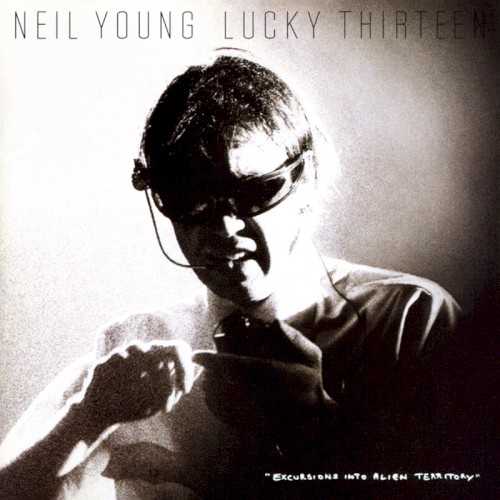 | Album: 23 of 43 Title: Lucky Thirteen Released: 1993-01-05 Tracks: 13 Duration: 1:04:09 Scroll: Up Down Top Bottom 25% 50% 75% Spotify Allmusic Wikipedia AlbumCover | 1 Sample and Hold (08:04) 2 Transformer Man (03:19) 3 Depression Blues (04:07) 4 Get Gone (live) (05:06) 5 Dont Take Your Love Away From Me (live) (06:16) 6 Once an Angel (03:55) 7 Where Is the Highway Tonight? (03:02) 8 Hippie Dream (04:26) 9 Pressure (02:46) 10 Around the World (05:28) 11 Mideast Vacation (04:22) 12 Aint It the Truth (live) (07:38) 13 This Notes for You (live) (05:34) |
| Lucky Thirteen : Allmusic album Review : Geffen Records seems to have intended a straightforward "best of" compilation containing the singles released from Neil Youngs five albums with the label between 1982 and 1987. Then Young himself became involved, and his version of a Geffen sampler naturally turned out to be more unusual. There were four songs never before released on a Young album: "Depression Blues" had been recorded for the first, rejected version of the country-ish Old Ways; "Get Gone" (a soundalike to "Willie and the Hand Jive") and the bluesy "Dont Take Your Love Away From Me" were live recordings with the "Shocking Pinks" rockabilly band that made Everybodys Rockin; and "Aint It the Truth" was a live recording from the Bluenotes tour that came just as Young was leaving Geffen. There were also an alternate version of "Sample and Hold" from Trans that ran an extra few minutes and a live take of "This Notes for You," the title song from Youngs 1988 return to Reprise Records. None of these were revelatory, and Youngs choices from the albums Trans, Old Ways, Landing on Water, and Life (there was nothing from Everybodys Rockin) were not the best he could have made. (Among the missing: "Little Thing Called Love," "Like an Inca," "Get Back to the Country," "Are There Any More Real Cowboys?," "Weight of the World," "Inca Queen," and "Long Walk Home.") Given that Young veered wildly from synth pop to rockabilly to country to rock during this period, assembling a coherent compilation was something of a challenge, and Young didnt even try, just picking his favorites and sequencing them chronologically. There are some interesting songs here to be sure, notably "Hippie Dream" (which runs an extra 15 seconds in this version) and "Mideast Vacation," but this summing up of Youngs least impressive, most bizarre era, instead of rehabilitating that era, was itself bizarre and unimpressive, too. (Lucky Thirteen was Neil Youngs first album since his debut not to reach the charts.) | ||
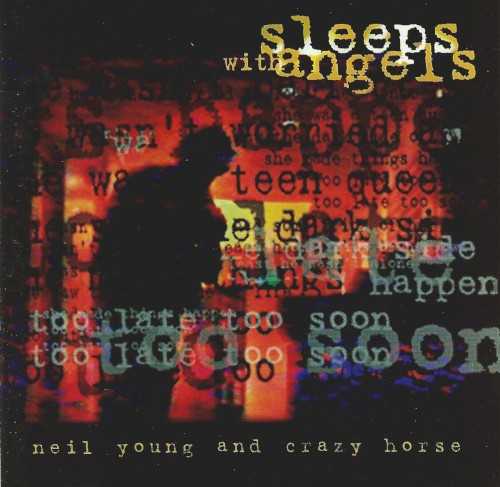 | Album: 24 of 43 Title: Sleeps With Angels Released: 1994-08-16 Tracks: 12 Duration: 1:02:48 Scroll: Up Down Top Bottom 25% 50% 75% Spotify Wikipedia Allmusic AlbumCover | 1 My Heart (02:44) 2 Prime of Life (04:04) 3 Driveby (04:44) 4 Sleeps With Angels (02:46) 5 Western Hero (04:00) 6 Change Your Mind (14:39) 7 Blue Eden (06:23) 8 Safeway Cart (06:32) 9 Train of Love (03:59) 10 Trans Am (04:07) 11 Piece of Crap (03:15) 12 A Dream That Can Last (05:29) |
| Sleeps With Angels : Allmusic album Review : Though it once again reunites him with Crazy Horse and includes such typical rock workouts as the lengthy "Change Your Mind" and the raucous "Piece of Crap," Sleeps With Angels is more musically varied than most of Neil Youngs albums with his erstwhile backup group, ranging from piano-based ballads like the album opener, "My Heart," and closer, "A Dream That Can Last," which might have fit on After the Gold Rush, to the country-folk "Train of Love," which sounds like a leftover from Harvest Moon, and the hard-edged grunge of the title track. The Crazy Horse influence comes in the songs structural simplicity and the unpolished playing. Though musically diverse, Sleeps With Angels is a song cycle in which Young repeats the same themes and images. To put it simply, the album is about death, presumably primarily the suicide of Nirvanas Kurt Cobain, which occurred while it was being recorded. From "My Heart," which declares, "Its not too late" and "Somehow, someone has a dream come true," to "A Dream That Can Last," which declares, "Theres a better life for me someday," Young begins and ends with a shaky, uncertain optimism, even though his language is riddled with references to violence, especially gunfire, and desperation. As in the albums title, even the references to sleep and dreams are about death. Young repeats some of the same lines from song to song and sometimes the same music ("Western Hero" and "Train of Love" have the same tune). The album thus has a tired, mournful feel that is both compelling and off-putting. Young had not investigated such forbidding territory since the days of Tonights the Night and On the Beach, and Sleeps With Angels is on a par with those often harrowing works. | ||
 | Album: 25 of 43 Title: Mirror Ball Released: 1995-06-23 Tracks: 11 Duration: 55:19 Scroll: Up Down Top Bottom 25% 50% 75% Spotify TrackSamples Wikipedia Allmusic AlbumCover | 1 Song X (04:40) 2 Act of Love (04:54) 3 I’m the Ocean (07:05) 4 Big Green Country (05:08) 5 Truth Be Known (04:39) 6 Downtown (05:10) 7 What Happened Yesterday (00:46) 8 Peace and Love (07:02) 9 Throw Your Hatred Down (05:45) 10 Scenery (08:50) 11 Fallen Angel (01:15) |
| Mirror Ball : Allmusic album Review : Neil Young uses Pearl Jam on Mirror Ball much as he has used his perennial backup band Crazy Horse, looking for feel and spontaneity. At the start of the record, he can be heard instructing them: "No tuning, nothing," and the take of "Im the Ocean" is an obvious run-through that became a master take. But Pearl Jam is not Crazy Horse; in place of the latters primitive, non-swinging sound, the former boasts spirited rhythms and dense guitar interplay that Young makes excellent use of in a series of songs built out of simple, melodic riffs. Those songs come mostly in pairs: "Song X" and "Act of Love," the first two tracks, both seem to be about abortion, especially in its religious aspect, each containing a reference to "the holy war"; "What Happened Yesterday" and "Fallen Angel" are song fragments on which Young plays the pump organ; and "Downtown" and "Peace and Love" find Young addressing the musical and philosophical concerns of hippies and contain name-checks of Jimi Hendrix, John Lennon, and Led Zeppelin. The songs also share highly imagistic lyrics that are allusive and frequently just obscure. At their best, notably on "Im the Ocean" and "Scenery," they provide intriguing portraits of the artist -- "People my age/They dont do the things I do," Young sings in "Ocean" -- while "Scenery" is one of his bitter denunciations of celebrity. Such subject matter is not new for Young, and Mirror Ball is typically uneven. But it is always interesting musically, suggesting that he has found another catch-up that works. Probably due to the commercial power of Pearl Jam, the album became Youngs highest-charting record since Harvest 23 years earlier, though it had a relatively short chart life. | ||
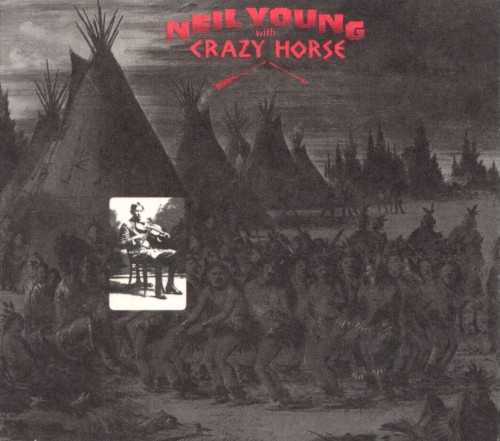 | Album: 26 of 43 Title: Broken Arrow Released: 1996-07-02 Tracks: 9 Duration: 53:42 Scroll: Up Down Top Bottom 25% 50% 75% Spotify Wikipedia Allmusic AlbumCover | 1 Big Time (07:26) 2 Loose Change (09:10) 3 Slip Away (08:36) 4 Changing Highways (02:23) 5 Scattered (Let’s Think About Livin’) (04:13) 1 This Town (03:01) 2 Music Arcade (04:01) 3 Baby What You Want Me to Do (08:08) 4 Interstate (06:40) |
| Broken Arrow : Allmusic album Review : In many ways, Broken Arrow follows the same path as Neil Youngs other 90s albums with Crazy Horse. Broken Arrow floats on waves of lumbering guitars and cascading feedback, ebbing and flowing with winding solos and drifting melodies. In a typical display of artistic perversion, Young has front-loaded the album with three epics with a combined running time of just over 25 minutes. Following the three epic-length songs come four concise tunes that range from the country-rock stomp of "Changing Highways" to the reflective "Music Arcade." Like the three songs that preceded them, these songs are uneven, with hazy melodies and underdeveloped lyrics. Finally, a long, live workout of Jimmy Reeds "Baby, What You Want Me to Do" -- which sounds like it was taken from an audience recording -- is tacked onto the end of the album. Although the song is a standout, it raises the question: what is the purpose of Broken Arrow? The album floats from song to song, with the guitars drowning out the sound of Youngs voice. There are some fine songs buried amid the long jams, but the album is directionless, and that lack of direction never manages to develop a consistent emotional tone. | ||
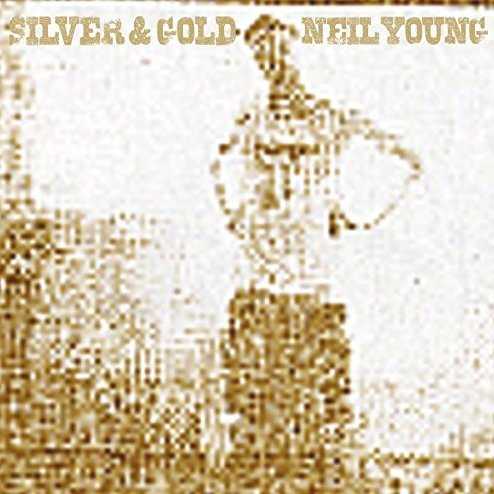 | Album: 27 of 43 Title: Silver & Gold Released: 2000-04-24 Tracks: 10 Duration: 39:14 Scroll: Up Down Top Bottom 25% 50% 75% Spotify Wikipedia Allmusic AlbumCover | 1 Good to See You (02:49) 2 Silver & Gold (03:16) 3 Daddy Went Walkin’ (04:01) 4 Buffalo Springfield Again (03:23) 5 The Great Divide (04:34) 6 Horseshoe Man (04:00) 7 Red Sun (02:48) 8 Distant Camera (04:07) 9 Razor Love (06:31) 10 Without Rings (03:41) |
| Silver & Gold : Allmusic album Review : Silver & Gold went through a number of incarnations before it was finally released in the spring of 2000. The endless delays raised hopes for the album, as did superstition -- dedicated Neil Young fans believed he was creatively reborn at the end of each decade. Everybody Knows This Is Nowhere, Rust Never Sleeps, and Freedom added credence to this theory, but those records were knocked out quickly, appearing a year after their predecessors. In contrast, Silver & Gold appeared four years after Broken Arrow. During those four years, all sorts of projects were in the works for Young, including a 1999 reunion with Crosby, Stills & Nash. His three songs on their comeback Looking Forward were pleasant acoustic numbers that often seemed a little slight. It was easy to assume that Young was saving the real treasures for his solo record, but Silver & Gold doesnt confirm that theory. Instead, its a continuation of his Looking Forward contributions, performed with the warm, amiable ramble of Harvest Moon. A pleasant sound, to be sure, but not exactly what Young followers were expecting. They also may be a little dismayed to realize that two of its best songs, "Silver & Gold" and "Razor Love," date from 1982 and 1987, respectively, suggesting that Neil may not be at the top of his game. Still, there are no truly bad songs here, although the light-hearted, light-headed reminiscence "Buffalo Springfield Again" treads close to the borderline. Its a low-key, charming, comfortable record, which is hardly a bad thing at all -- it just doesnt quite live up to the abnormally high expectations. Fortunately, those expectations fade upon repeated plays, and Silver & Gold reveals itself as a nice Neil Young record. Nothing particularly special, but nice all the same. | ||
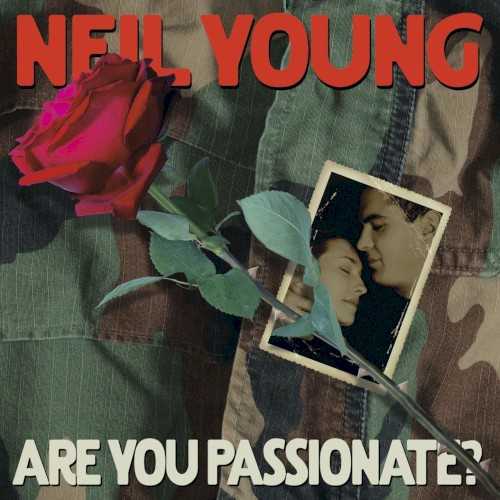 | Album: 28 of 43 Title: Are You Passionate? Released: 2002-04-09 Tracks: 11 Duration: 1:05:49 Scroll: Up Down Top Bottom 25% 50% 75% Spotify TrackSamples Wikipedia Allmusic AlbumCover | 1 You’re My Girl (04:41) 2 Mr. Disappointment (05:26) 3 Differently (06:04) 4 Quit (Don’t Say You Love Me) (06:02) 5 Let’s Roll (05:54) 6 Are You Passionate? (05:08) 1 Goin’ Home (08:49) 2 When I Hold You in My Arms (04:44) 3 Be With You (03:32) 4 Two Old Friends (06:15) 5 She’s a Healer (09:08) |
| Are You Passionate? : Allmusic album Review : Neil Young had been playing with Booker T. & the MGs since the mid-90s, touring heavily with the Stax house band, but the soul grooves on 2002s Are You Passionate?, the first album he cut with the group as a backing band, still come as a surprise. It could be because that even when he assembled the Bluenotes for the proto-neo-swing This Notes for You, he never tried to be as warm, seductive, and romantic as he does here. Thats right, the title is no joke -- this is a romantic album, grounded with tight Southern soul rhythms and dressed in Youngs signature fuzz-tone Les Paul. No matter the topic of the song, the essential sound is the same: a lazy soul groove, built on what Booker T. & the MGs did in the late 60s, vamping over Neils three chords as he croons, usually in a falsetto but sometimes in a gruff lower register, while kicking out a variation of "I Cant Turn You Loose" (most notably heard on the opener, "Youre My Girl," but rearing its head elsewhere). This is even true of "Lets Roll," a song inspired by the final words of Todd Beamer, one of the passengers on Flight 93 who helped overtake terrorists intent on flying a plane into Washington D.C.; though its one of the first major post-9/11 songs, written by an artist notorious for his support of Reagan, it is neither reactionary nor all that moving -- mostly, it just sounds like another mid-tempo groover on an album filled with them. And thats the main problem with the record -- though it reads well on paper and is certainly more ambitious than any Neil Young record in years, the songs arent distinctive or developed, and apart from the rather muscular, Crazy Horse-backed "Goin Home," theyre all delivered in the same fashion and all blend together. Instead of sounding like a refreshing change of pace, its a muddled, aimless affair from an artist whos had too many middling efforts over the last decade. | ||
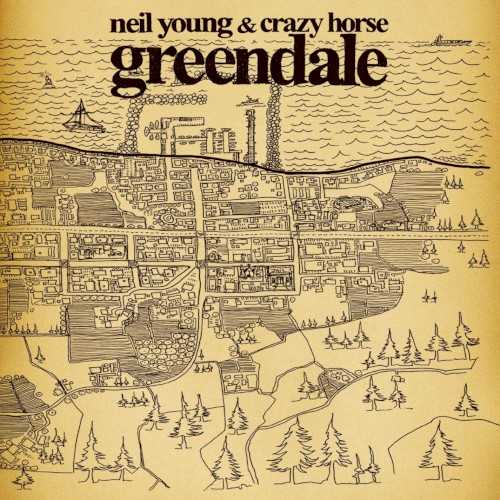 | Album: 29 of 43 Title: Greendale Released: 2003-08-18 Tracks: 10 Duration: 1:18:24 Scroll: Up Down Top Bottom 25% 50% 75% Spotify Wikipedia Allmusic AlbumCover | 1 Falling From Above (07:27) 2 Double E (05:18) 3 Devil’s Sidewalk (05:18) 4 Leave the Driving (07:14) 1 Carmichael (10:20) 2 Bandit (05:12) 3 Grandpa’s Interview (12:57) 4 Bringin’ Down Dinner (03:16) 1 Sun Green (12:03) 2 Be the Rain (09:13) |
| Greendale : Allmusic album Review : Prior to its release, Greendale received more attention than any Neil Young album in years, but it wasnt positive. Young hauled out his concept album -- about an extended family in a small town called Greendale, and how theyre torn apart by a murder -- to unsuspecting audiences, who by and large were not happy about spending anywhere from 55 to 85 dollars to hear a dense convoluted song cycle, complete with rambling narrative from Young, for the first hour of the show and not hearing many hits in the remainder of the set. Early in the summer of 2003, there was a brief blast of stories about this quasi-scandal, setting the stage for the late-summer release of the album: it got Young some needed press, and announced that unlike his last several albums, Young was actually trying this time around. Frankly, he needed a change. Ever since 1994s Sleeps With Angels -- or, if youre less charitable, 1990s Ragged Glory -- he had been drifting, playing with different groups, never quite mustering up enough energy to assemble a consistent set of songs whenever he headed into the studio. Here, the story and the setting give Young a hook for the record, a common theme that he can rally around, and the album benefits so much from that focus that it doesnt really matter that the story is convoluted beyond comprehension; the plot matters so much that it winds up not mattering at all. Close attention and repeated listens offer few rewards to the careful listener, because Young doesnt really say much of anything here, no matter how elaborately he says it. Learning more about the narrative -- whether its through the simultaneously released DVD of the Young-directed film Greendale, hearing his rambling on-stage between-song narratives, or reading apparent transcriptions of these ramblings in the liner notes -- illuminates the story slightly, even as declarations like "When I was writing this I had no idea what I was doing, so I was just as surprised as you are" emphasize the suspicion that theres not much meaning in the whole enterprise. All this doesnt really matter because Greendale works as a record -- it ebbs and flows and it holds together, playing as a unified whole on a level he hasnt approached since Ragged Glory. As Young says in the liner notes, these are things "you cant tell by listening to the songs, you have to listen to the instrumentals to get this," and while that is meant to apply to one of the many Crazy Horse-fueled meandering improvs, it really applies to the album as a whole since Greendale connects in its overall picture, not the details. Sometimes, such as the quietly eerie and affecting "Bandit," the songs stand apart from the concept, but usually the lyrics are too devoted to his winding narrative to be their own entities. Then again, Greendale was designed to be an interconnected song cycle, and if the narrative neither works nor signifies much, it nevertheless kept Young focused on the construction of the album, whether its giving the songs memorable hooks or finding ways to make the signature ramshackle vibe of Crazy Horse sound both fresh and appropriate for this tale. It all adds up to a very good record -- one that is interesting, and one that satisfies musically. It may not be a latter-day masterpiece on the level of Dylans Love and Theft, but it most surely is a comeback for an artist who seemed permanently adrift at sea. | ||
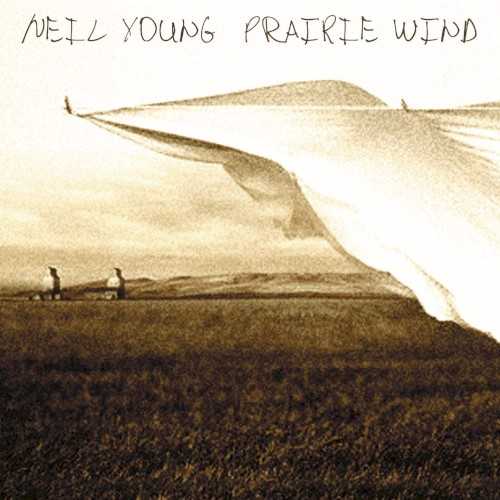 | Album: 30 of 43 Title: Prairie Wind Released: 2005-09-27 Tracks: 10 Duration: 52:10 Scroll: Up Down Top Bottom 25% 50% 75% Spotify Wikipedia Allmusic AlbumCover | 1 The Painter (04:36) 2 No Wonder (05:45) 3 Falling Off the Face of the Earth (03:35) 4 Far From Home (03:47) 5 It’s a Dream (06:31) 6 Prairie Wind (07:34) 7 Here for You (04:32) 8 This Old Guitar (05:32) 9 He Was the King (06:08) 10 When God Made Me (04:05) |
| Prairie Wind : Allmusic album Review : Since Prairie Wind is a return to the soft, lush country-rock sound of Harvest; since Neil Young suffered a brain aneurysm during its recording; since it finds the singer/songwriter reflecting on life and family in the wake of his fathers death; and since its his most cohesive album in a decade, it would seem that all these factors add up to a latter-day masterpiece for Young, but thats not quite the case. Prairie Wind manages to be less than the sum of its parts and the problem isnt a lack of good songs (although it does have a few more clunkers than it should) or a botched concept. Youngs decision to revive the country-rock that brought him his greatest popularity never feels like a cynical move -- the music is too warm, comfortable, and friendly to feel like anything but Neil playing to his strengths. However, since he cut this in Nashville with a bunch of studio pros including legendary keyboardist Spooner Oldham, it feels just a tad slicker than perhaps it should, since the smooth sound inadvertently highlights the sentimentality of the project. Its hard to begrudge Young if he wants to indulge in rose-colored memories -- a brush with death coupled with a loss of a parent tends to bring out sentimentality -- but such backward-gazing songs as "Far from Home" feel just a hair too close to trite, and the easy-rolling nature of the record doesnt lend them much gravity. There a few other songs that tend toward too close to the simplistic, whether its the specific invocations of 9/11 and Chris Rock on "No Wonder" or the supremely silly Elvis salute "He Was the King," which are just enough to undermine the flow of the album, even if they fit into the general autumnal, reflective mood of the record. But since they do fit the overall feel of the album, and since theyre better, even with their flaws, than the best songs on, say, Silver & Gold or Broken Arrow or Are You Passionate?, they help elevate the whole of Prairie Wind, particularly because there are some genuinely strong Young songs here: the moody opener "The Painter," the gently sighing "Fallin off the Face of the Earth," the ethereal "Its a Dream," the sweet, laid-back "Here for Your," the understated "This Old Guitar" (theres also the sweeping "When God Made Me," recorded complete with a gospel chorus, one that will either strike a listener as moving or maudlin -- a latter-day "A Man Needs a Maid," only not as strong). This set of songs does indeed make Prairie Wind a better album than anything Young has released in the past decade, which means that its easy to overrate it. For despite all of its strengths, neither the recording nor the songs are as memorable or as fully realized as his late-80s/early-90s comeback records -- Freedom, Ragged Glory, and Harvest Moon -- let alone his classic 70s work. Nevertheless, its the closest Young has come to making a record that could hold its own with those albums in well over a decade, which means its worthwhile even if its never quite as great as it seems like it could have been. | ||
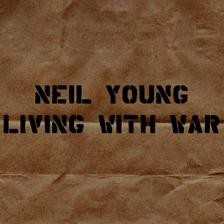 | Album: 31 of 43 Title: Living With War Released: 2006-05-02 Tracks: 10 Duration: 41:52 Scroll: Up Down Top Bottom 25% 50% 75% Spotify TrackSamples Wikipedia Allmusic AlbumCover | 1 After the Garden (03:23) 2 Living With War (05:04) 3 The Restless Consumer (05:47) 4 Shock and Awe (04:52) 5 Families (02:25) 6 Flags of Freedom (03:42) 7 Let’s Impeach the President (05:10) 8 Lookin’ for a Leader (04:03) 9 Roger and Out (04:25) 10 America the Beautiful (02:56) |
| Living With War : Allmusic album Review : In a move that deliberately echoes the rush release of "Ohio" in the wake of the Kent State shootings, Neil Young bashed out his 2006 protest record Living with War in a matter of days, sometimes recording songs the day they were written, and then seized the opportunities of the digital age by streaming the entire album on his website only weeks after it was recorded, with the official digital and CD releases trailing several days later. Its the best use yet of the instant, widespread distribution that the Web has to offer, and it also hearkens back to the days when folk music was topical, turning the news into song. But if the ballads of the 19th century were passed along gradually, growing along the way, or if the protest tunes of the folk revival of the 1950s and 60s grew in stature being performed regularly, gaining strength as singer after singer sang them, Living with War captures a specific moment in time: early 2006, when George W. Bushs approval ratings slipped to the low 30s, as discontent sowed by the Iraq War, Hurricane Katrina, rising gas prices, and much more turned into a general malaise in the country (or in political shorthand, it was the moment when George W. turned into Jimmy Carter). To some, the specificity of Youngs writing on Living with War will forever date it, but thats a risk with any topical folk, rock, or pop, from "We Shall Overcome" to "We Are the World" -- or "Ohio," for that matter. Young is aware of this and embraces the allegedly short shelf life of his songs for Living with War by directly addressing the political turmoil in the U.S.A. in 2006 and the real human wreckage it has left behind. As such, it will function as a vivid document of its era, as much as any journalism of its time, but Living with War isnt rock-as-CNN: its a work of art, and its a canny one at that, with Young drawing on familiar words and music to create both historic and emotional context for his songs. Its not merely clever that "Living with War" quotes "The Star Spangled Banner," or that "Flags of Freedom" consciously reworks Dylans "Chimes of Freedom" -- it helps tie Youngs work to the past and gives his new work greater resonance. And nowhere is that more true than on "Lets Impeach the President" and how its melody recalls "The City of New Orleans" to help underscore what was lost in the governments bungled reaction to Katrinas devastation to the legendary American city. With a grandstanding title like that, along with its George W. soundbites, "Lets Impeach the President" is the flashiest song here, and it crystallizes whats good about the album: sure, it pulls no punches and its angry, but its not just ranting; its artfully written and effective, as is Living with War as a whole. Its not perfect, but it has a vitality lacking in Youngs recorded work of the last 15 years or so, and its blend of Greendales loud, meandering guitar rock and the bittersweet mournful, aging hippie vibe of Prairie Wind is not only appealing, its better executed than either of those good yet flawed records -- and that execution not only applies to the ragged glory of the recording, but to the songs themselves. They manage to be unified in a way that Young wanted Greendale to be but didnt quite pull off, yet they also stand on their own and are, overall, more memorable than those on Prairie Wind. And thats the reason why, politics aside, Living with War stands as a very strong, effective Neil Young album that will continue to have a punch long after the George W. Bush administration has faded into the history books. | ||
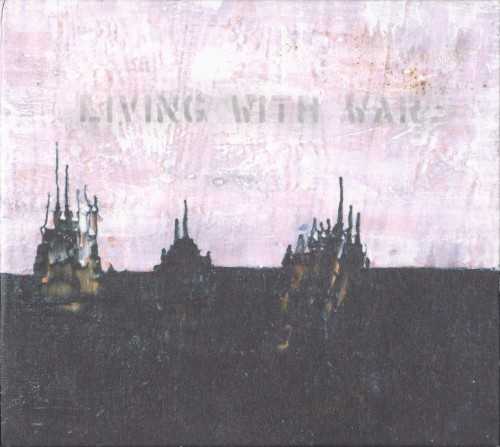 | Album: 32 of 43 Title: Living With War: In the Beginning Released: 2006-12-15 Tracks: 9 Duration: 38:55 Scroll: Up Down Top Bottom 25% 50% 75% Spotify Wikipedia AlbumCover | 1 After the Garden (03:27) 2 Living With War (05:10) 3 The Restless Consumer (05:52) 4 Shock and Awe (04:57) 5 Families (02:33) 6 Flags of Freedom (03:47) 7 Lets Impeach the President (04:32) 8 Lookin for a Leader (04:10) 9 Roger and Out (04:24) |
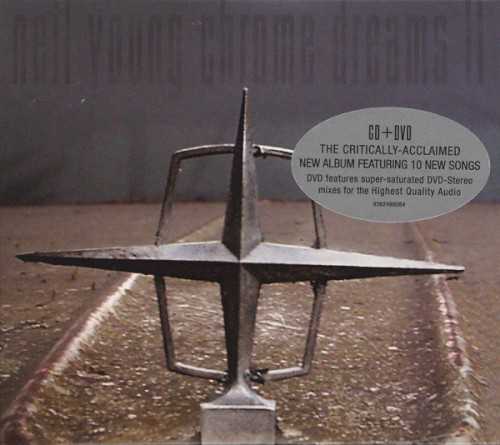 | Album: 33 of 43 Title: Chrome Dreams II Released: 2007-10-19 Tracks: 10 Duration: 1:06:17 Scroll: Up Down Top Bottom 25% 50% 75% Spotify Wikipedia Allmusic AlbumCover | 1 Beautiful Bluebird (04:30) 2 Boxcar (02:46) 3 Ordinary People (18:12) 4 Shining Light (04:46) 5 The Believer (02:43) 6 Spirit Road (06:35) 7 Dirty Old Man (03:20) 8 Ever After (03:34) 9 No Hidden Path (14:33) 10 The Way (05:14) |
| Chrome Dreams II : Allmusic album Review : Neil Young spent his 2006 hawking Living with War, an album as immediate as a news bulletin, so perhaps it made sense that after its promo push was done he would retreat into the past, planning to finally finish Archives, the long-promised box set of unreleased performances from his vaults. Two individual discs of classic live performances were released in the winter of 2006/2007, acting as a teaser for the proposed fall release of the box, but like with most things involving Neil, things didnt work precisely as planned, as he once again pushed Archives to the back burner so he could release Chrome Dreams II, a sequel to an album that never came out in the first place. The first Chrome Dreams was slated for a 1977 release, but for some indiscernible reason Young scrapped the album, parsing out some of the songs on subsequent albums, sometimes re-recording the originals, sometimes overdubbing, sometimes just sticking the previously unreleased tracks onto new albums. Among the Chrome Dreams songs that popped later are some of his greatest, including "Like a Hurricane" and an originally acoustic "Powderfinger" and "Pocahontas," along with other such excellent tunes as "Sedan Delivery," "Too Far Gone," and "Look Out for My Love," a pedigree that would suggest that Chrome Dreams II could include its fair share of major songs. Despite the inclusion of the long-bootlegged (and simply long at a lumbering 18 minutes) "Ordinary People," thats not quite true: its a modest collection of stray songs and new tunes, pieced together in a fashion similar to 1989s Freedom, which in fact is where the 1977 "Too Far Gone" was finally unveiled. Indeed, Chrome Dreams II shares more similarities to Freedom than the original Chrome Dreams -- so much so that its a mystery why its dubbed as a sequel, but its a mystery not worth pondering, as there are few clues to their correlation, and even if a definitive answer to their kinship could be dredged up, it wouldnt illuminate the 2007 album, which is merely a good Neil Young album. Perhaps a little more than good, actually, as this has a shagginess and tattered heart thats been missing from his work for a long time, as hes spent a good chunk of the past 15 years pursuing conceptual works, ranging from thematic concept albums (Living with War, Greendale) to musical genre exercises (Are You Passionate?, Prairie Wind). Here Neil dabbles in all his signatures, starting the album with the sweet country corn of "Beautiful Bluebird," then careening to the mildly menacing minor-key groove "Boxcar" before he gets to the light, almost bouncy soul-pop of "The Believer" (complete with call-and-response backing vocals), the Crazy Horse mysticism of "Spirit Road," the lazy loping country of "Every After," and the elongated guitar workout of "No Hidden Path." He even gets way out with "The Way," singing with a childrens choir, a stab at innocence thats cheerfully at odds with the sludgy "Dirty Old Man," an unexpected revival of the boneheaded off-color jokes of "Welfare Mothers," and then, of course, theres the albums centerpiece, "Ordinary People," a winding epic recorded with the Bluenotes in 1988 thats dated in its splashy production (and perhaps its blaring horns, since Neil largely abandoned the Bluenotes after This Notes for You), yet it sounds immediate and gripping. Its the kind of song to build an album upon, which is precisely what Neil has done with Chrome Dreams II, using it as an excuse to round up other songs with no home. This doesnt make for an album that holds together thematically the way other latter-day Neil albums do, but its mess is endearing, recalling how charmingly ragged albums like After the Gold Rush, Tonights the Night, Rust Never Sleeps, and Freedom are, even if Chrome Dreams II never manages to soar as high as those classics. | ||
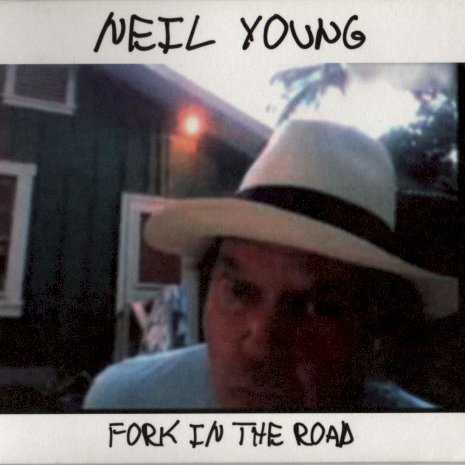 | Album: 34 of 43 Title: Fork in the Road Released: 2009-04-06 Tracks: 10 Duration: 38:44 Scroll: Up Down Top Bottom 25% 50% 75% Spotify Wikipedia Allmusic AlbumCover | 1 When Worlds Collide (04:13) 2 Fuel Line (03:11) 3 Just Singing a Song (03:31) 4 Johnny Magic (04:17) 5 Cough Up the Bucks (04:37) 6 Get Behind the Wheel (03:08) 7 Off the Road (03:21) 8 Hit the Road (03:36) 9 Light a Candle (03:00) 10 Fork in the Road (05:46) |
| Fork in the Road : Allmusic album Review : It somehow is fitting that Fork in the Road arrived in stores a week after President Barack Obama announced his bail-out plan for the American automobile industry: its Neil Youngs one-man campaign to remind everybody what cars used to mean and what they should be again. Neil always has had a soft spot for cars -- he drove a hearse from Toronto to Los Angeles, immortalizing the vehicle in "Long May You Run" -- so this album-length motor manifesto couldnt be called unexpected, nor could its palpable, ever-flowing undercurrent of nostalgia be a surprise for a man who owns a toy train company. Plus, romanticizing the classic years of Detroit is natural; those big boats were gorgeous, so unlike the colorless, characterless sedans that rule the road these days. Neil knows this and knows that dependence on oil is crippling the culture, not to mention the environment, and is enough of an evangelist to cobble together his own green machine, putting an electric engine in a 1959 Lincoln Continental, driving the car to Washington and writing a whole album about the vehicle and its downtrodden times. Fittingly, Fork in the Road is like his Lincvolt: it has a new engine in an old body, so it has all of the classic contours but runs a little differently. The Lincvolt might be smooth and efficient, but Fork in the Road is charmingly clunky, a side effect of its quick creation and Youngs hard-headedness. Neil might be writing records as quickly as a blogger these days but musically hes stuck in the past, never letting go of his chunky Les Paul and candied folk harmonies, embracing his status as an old crank so enthusiastically he happily presents himself as a crazy old coot on the albums cover. At times, he certainly does sound like the resident codger, snarling about the fading economy and how everybodys been downsized, good naturedly sneering "big rock star/my sales have tanked/I still got you/thanks" on the title track. Despite the undercurrent of auto nostalgia here, Young isnt living in the past and hes keenly aware of the present. This blend of dreamy thoughts of yesteryear, spitting fury over the present, and planning for the future gives Fork in the Road a bit of a kick that propels it through a few songs that arent much more than a garage groove, but the whole thing benefits from its messiness; the loose ends make it feel alive. | ||
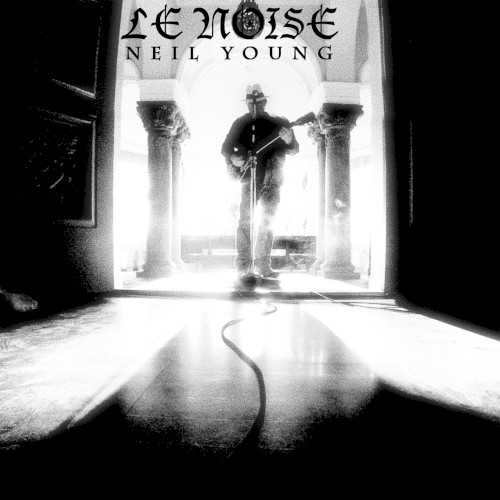 | Album: 35 of 43 Title: Le Noise Released: 2010-09-24 Tracks: 8 Duration: 37:59 Scroll: Up Down Top Bottom 25% 50% 75% Spotify TrackSamples Allmusic AlbumCover | 1 Walk With Me (04:25) 2 Sign of Love (03:57) 3 Someone’s Gonna Rescue You (03:28) 4 Love and War (05:36) 5 Angry World (04:13) 6 Hitchhiker (05:31) 7 Peaceful Valley Boulevard (07:09) 8 Rumblin’ (03:36) |
| Le Noise : Allmusic album Review : The old conventional wisdom on Neil Young used to be that he alternated between acoustic folk and full-on guitar skronk with every other album, but 2010’s Le Noise -- the French affection in its title a tongue-in-cheek tip of the beret to his producer Daniel Lanois -- melds the two extremes. At its core, it’s a singer/songwriter album, a collection of reflections and ruminations about life and loss in the modern world, war imagery rubbing against battered memories and tattered autobiography, the songs leisurely following their own winding path, but it’s produced loudly, with Neil supporting himself with only his electric guitar for all but two tracks, where he switches the Les Paul for an acoustic. He’s not in Crazy Horse mode, spitting out chunky garage rock riffs, but strumming his overdriven electric, with Lanois tweaking the results, accentuating the ambience in post-production. To say the least, this results in a distinctive album, but it plays differently than it reads, sounding not too dissimilar from the Bush-era laments of Freedom. If Le Noise isn’t as galvanizing as Freedom, it’s because it’s created on a considerably smaller scale, its eight songs containing no masterpieces and Lanois’ moody noir production reining in Young’s messy signature. So, Le Noise winds up as something elusive and intriguing, a minor mood piece that seems to promise more than it actually delivers. | ||
 | Album: 36 of 43 Title: Americana Released: 2012-06-04 Tracks: 11 Duration: 56:55 Scroll: Up Down Top Bottom 25% 50% 75% Spotify Allmusic AlbumCover | 1 Oh Susannah (05:03) 2 Clementine (05:42) 3 Tom Dula (08:13) 4 Gallows Pole (04:15) 5 Get a Job (03:01) 6 Travel On (06:47) 7 High Flyin’ Bird (05:30) 8 Jesus’ Chariot (05:38) 9 This Land Is Your Land (05:26) 10 Wayfarin’ Stranger (03:07) 11 God Save the Queen (04:08) |
| Americana : Allmusic album Review : Getting the band back together for the first time since 2003, Neil Young corrals Crazy Horse through Americana, a collection comprised primarily of old folk songs -- not the weird, forgotten ones scholars have excavated, but the familiar ones taught in elementary schools from sea to shining sea. Ornery git that he is, Neil doesnt follow his own concept to the letter, finding a way to shoehorn the Silhouettes rocking doo wop classic "Get a Job" and the British commonwealth anthem "God Save the Queen" into Americana, their presence suggesting a possible political component to the record. Or perhaps those were the songs Young felt like playing that day. With an album as ungainly as Americana, either concept is possible and any clarity is crushed by the Horses heavy-footed stomp. Here, once again graced by the presence of guitarist Frank Sampedro, who sat out 2003s rock opera Greendale, Crazy Horse stumble and lurch as they pound the same three chords theyve been bashing out for 40 years, time not adding acumen but rather eroding whatever finesse they ever possessed. Always garage rock primitives, Crazy Horse sounds downright amateurish on Americana, as if they woke up one morning and couldnt remember how to play their instruments. Each cut plays like a first take, none worse than "Get a Job," where the band struggles mightily to achieve some semblance of swing and misses. Sometimes, this cacophony can be oddly compelling, particularly when a childrens chorus -- the better to underscore these songs origins, perhaps -- are brought into the mix, inevitably leading to everybody tripping over each other. It all winds up as an ungodly mess: Crazy Horse do, as Young asserted they would, make these songs their own, but by doing so, theyve made them so nobody else would ever want them. | ||
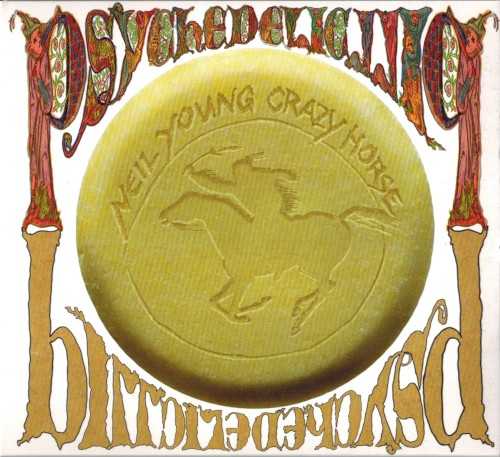 | Album: 37 of 43 Title: Psychedelic Pill Released: 2012-10-26 Tracks: 9 Duration: 1:27:44 Scroll: Up Down Top Bottom 25% 50% 75% Spotify Allmusic Wikipedia AlbumCover | 1 Driftin’ Back (27:37) 2 Psychedelic Pill (03:28) 3 Ramada Inn (16:50) 4 Born in Ontario (03:49) 1 Twisted Road (03:29) 2 She’s Always Dancing (08:33) 3 For the Love of Man (04:14) 4 Walk Like a Giant (16:29) 5 Psychedelic Pill (alternate mix) (03:12) |
| Psychedelic Pill : Allmusic album Review : As it turns out, the lumbering Americana was merely an amateurish rehearsal for the reuniting Neil Young & Crazy Horse. Just a handful of months after that collection of schoolhouse folk tunes, the band released the mammoth Psychedelic Pill, Neils first-ever studio double-LP. Its not just the album itself that sprawls: Young rides Crazy Horse through long, long songs, kicking off the proceedings with the 27-minute "Driftin Back," a song that makes the nearly 17-minute "Ramada Inn" and 16:30 "Walk Like a Giant" look comparatively svelte. No matter how many three-minute palate cleansers surround these monoliths, theres no getting around the fact that these overdriven, overlong jams are a way of separating the men from the boys, leaving behind only those with the strength to stomach such a large, undiluted dose of the Horse. Fortunately, the band is sounding much more limber than it did on Americana, where it seemed like the group members were picking up their instruments for the first time in a decade, so they can keep things moderately enchanting as the rock rolls out with no end in sight. That heavy, churning, perpetual motion is whats unique about Young & Crazy Horse, and Psychedelic Pill provides an abundance of it, but this feels different than their skronk-fests of the past, lacking the ballast of Ragged Glory, the sinew of Rust Never Sleeps, or the crackling, kinetic energy of Arc Weld or Live Rust. Instead, this is the sound of a veteran band settling into their familiar frayed clothes, doing precisely what they do best and nothing more. An air of tempered nostalgia permeates the album, evident not only in the unapologetic 70s grind of the band but in Youngs lyrics, which fuzzily rhapsodize about "Drifting Back" and the first time he heard "Like a Rolling Stone." Unlike Dylan -- or many other of his baby boomer peers -- Young sounds like a defiant old coot pining for his past, which makes Psychedelic Pill yet another oddity in a catalog filled with them: its noise rock as comfort food. | ||
 | Album: 38 of 43 Title: A Letter Home Released: 2014-04-18 Tracks: 12 Duration: 39:27 Scroll: Up Down Top Bottom 25% 50% 75% Spotify Wikipedia Allmusic AlbumCover | 1 A Letter Home (intro) (02:17) 2 Changes (03:56) 3 Girl From the North Country (03:31) 4 Needle of Death (04:57) 5 Early Morning Rain (04:24) 6 Crazy (02:16) 7 A Letter Home (intro #2) / Reason to Believe (02:47) 8 On the Road Again (02:23) 9 If You Could Read My Mind (04:04) 10 Since I Met You Baby (02:13) 11 My Hometown (04:08) 12 I Wonder If I Care as Much (02:31) |
| A Letter Home : Allmusic album Review : During the 2014 promo campaign for Pono, his high-end digital audio device, Neil Young called his forthcoming album A Letter Home "an art project," which is an appropriate term for this curious collection of covers from his contemporaries. Its not so much that the choice of songs is unusual -- nearly all of them are from the 60s and 70s, years when Young was also active, but a handful ("Crazy," "Since I Met You Baby," "I Wonder If I Care as Much") date from the late 50s or early 60s -- but the recording method. Young headed down to Jack Whites Third Man Records in Nashville where Jack installed a refurbished Voice-O-Graph booth, a device designed to allow a user to "Make Your Own Record" by cutting a song or message directly to vinyl. These contraptions were designed in 1947 and were once a common sight in arcades and fairs but they died away in the 70s, turning into an artifact of a weird old Americana beloved by both Young and White. Neil decided to use the Voice-O-Graph to record a full album, an experiment thats strictly about the method of recording, not the music itself. By design, the Voice-O-Graph allows for no overdubs -- it captures everything that happens in the booth and nothing more -- so the performances are intimate and sometimes rushed, qualities that are alternately enhanced and undercut by the thin, crackly recording. This aural affectation can be affecting -- in particular, his readings of Gordon Lightfoots "Early Morning Rain" and "If You Can Read My Mind" are quite sweet, as is Bob Dylans "Girl from the North Country," while theres a genuine pang of pathos lying in Bert Janschs "Needle of Death" -- but the trebly, wavy audio can also seem cacophonous, whether its capturing Neil alone (Bruce Springsteens "My Hometown") or in tandem with White (a version of Willie Nelsons "On the Road Again" that always seems just on the verge of falling apart, which could be perceived as a compliment depending on your view). Usually, the flaws of A Letter Home can be pegged on the archaic recording technology -- only a couple of performances feel shambolic -- but Young is also having fun with what the Voice-O-Graph meant, opening the album with a wry, winding spoken letter to his departed mother and then addressing another missive to her later on the record. These words are simultaneously sentimental and impish, a wink to the audience that Young is in on the joke but also doesnt quite consider A Letter Home a joke. Sure, theres artifice and humor here, but theres also heart, and this blend of emotions is what makes A Letter Home one of Neil Youngs quintessential, endearingly odd records. | ||
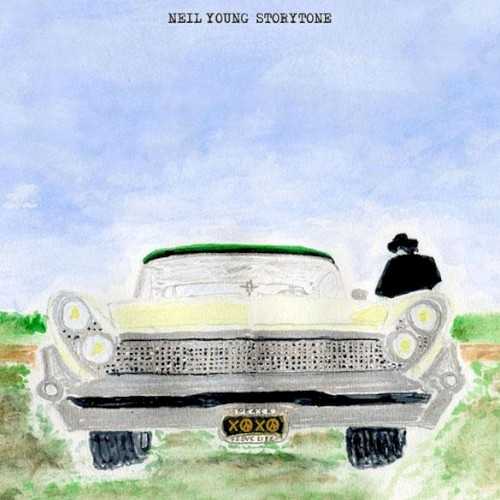 | Album: 39 of 43 Title: Storytone Released: 2014-11-03 Tracks: 20 Duration: 1:18:34 Scroll: Up Down Top Bottom 25% 50% 75% Spotify Allmusic Wikipedia AlbumCover | 1 Plastic Flowers (solo) (04:02) 2 Who’s Gonna Stand Up (solo) (03:49) 3 I Want to Drive My Car (solo) (02:22) 4 Glimmer (solo) (03:11) 5 Say Hello to Chicago (solo) (04:54) 6 Tumbleweed (solo) (03:22) 7 Like You Used to Do (solo) (02:38) 8 I’m Glad I Found You (solo) (03:22) 9 When I Watch You Sleeping (solo) (05:35) 10 All Those Dreams (solo) (03:52) 1 Plastic Flowers (orchestral) (04:06) 2 Who’s Gonna Stand Up (orchestral) (04:24) 3 I Want to Drive My Car (big band) (03:08) 4 Glimmer (orchestral) (04:59) 5 Say Hello to Chicago (big band) (04:57) 6 Tumbleweed (orchestral) (03:37) 7 Like You Used to Do (big band) (02:40) 8 I’m Glad I Found You (orchestral) (03:40) 9 When I Watch You Sleeping (orchestral) (05:31) 10 All Those Dreams (orchestral) (04:25) |
| Storytone : Allmusic album Review : Storytone arrived at the end of a year that already saw another new Neil Young album -- that would be A Letter Home, a collection of folk covers recorded at Jack Whites Voice-O-Graph direct-to-vinyl recording booth at Third Man Records -- which itself was only the tip of the iceberg that was Neils 2014. That spring, Young launched a high-end digital audio system called Pono, which was followed by the summer news that he was divorcing Pegi, his wife of 36 years, an event that led to a fresh feud with David Crosby that then led to Young saying he would never play with CSN again and, if that werent enough, Young also published his second book, Special Deluxe: A Memoir of Life & Cars, just prior to the release of Storytone. Thatd be enough to sustain a few years for most artists but we all know perfectly well that Neil Young isnt like most artists. He thrives on this kind of chaos and, appropriately enough, Storytone is fairly messy -- which is quite an achievement for an album recorded in large part live in front of a full orchestra. Young does indeed croon over those strings, often rhapsodizing about the powers of new love or pleading to save the Earth, although he sometimes gets restless and rolls out a swinging big band. This means Storytone sometimes plays like a hybrid of Harvest at its most florid and the bloozy swagger of This Notes for You -- a curious combination that doesnt seem quite as extreme on the albums second disc, which houses nothing but solo renditions of the records ten tunes, but the very fact that theres a reverse image of the album strengthens the impression that Young isnt much in the mood to keep things simple. Which is odd, because all the original songs here are relatively simple, built to withstand simple arrangements -- they sound fine when Young supports himself with no more than a guitar, piano, or ukulele -- and they dont buckle underneath the weight of an orchestra. Versatile they may be, but theyre united by Youngs aching sincerity. Hes earnest whether hes taking a stance against fracking, romanticizing his old car, or singing about new love with the dewiness of a teenager. The open-heartedness is sweet if somewhat adolescent, a feeling not helped by the preponderance of 2014 headlines about Youngs love life, but even without that tabloid gunk, songs like "Glimmer" have an optimism that sounds just a shade disarming coming from a former cynic facing 70. But thats one of the glorious things about Neil Young: he surprises and by delivering this big, sloppy valentine to everything he is and everything he loves, hes not being neat but he is true to himself. | ||
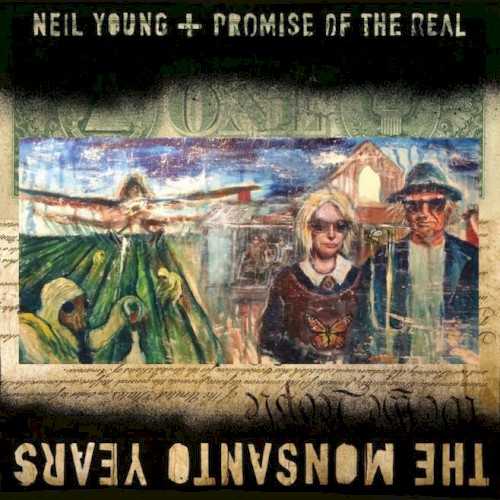 | Album: 40 of 43 Title: The Monsanto Years Released: 2015-06-26 Tracks: 9 Duration: 50:53 Scroll: Up Down Top Bottom 25% 50% 75% Spotify Wikipedia Allmusic AlbumCover | 1 A New Day for Love (05:52) 2 Wolf Moon (03:52) 3 People Want to Hear About Love (06:20) 4 Big Box (08:17) 5 A Rock Star Bucks a Coffee Shop (05:00) 6 Workin’ Man (04:43) 7 Rules of Change (04:39) 8 Monsanto Years (07:46) 9 If I Don’t Know (04:24) |
| The Monsanto Years : Allmusic album Review : Old folkie that he is, Neil Young harbors a soft spot for songs as protest, and The Monsanto Years is full of them. Where he often railed against war, here the purported target is the agricultural company Monsanto, a firm that, among other things, specializes in genetically modified crops, but Young uses that as a pivot to rage against all manner of modern outrages. Apathy among the populace, avarice among corporations, and cultural homogenization provide the throughline on The Monsanto Years, and while the weathered hippie takes some time to lay down his electric guitar and breathe, this isnt a mournful album like Living with War, his W-era missive. This is a raging record and to that end, Young hired the Promise of the Real, a ragtag outfit led by Willie Nelsons guitarist son Lukas, to approximate Crazy Horses lop-legged lumber. Usually it works: the group roars not with righteousness but with their own glee at making noise. Plus, the Promise of the Real is adept at the softer side, too, so they ably follow Young, laying down the electric and harmonizing in a fashion reminiscent of an unwashed CSN. Young is blessed with a younger, wilier version of his old compadres and that suits his tunes, which feel comfortable yet have a bite. Young uses his sturdy footing to lash out at what he perceives as destructive forces -- to our dinner tables and social fabric -- and if the individual message may wind up fading like yesterdays newspapers, the music will keep The Monsanto Years burning bright. | ||
 | Album: 41 of 43 Title: Peace Trail Released: 2016-12-02 Tracks: 10 Duration: 38:18 Scroll: Up Down Top Bottom 25% 50% 75% Spotify Wikipedia Allmusic AlbumCover | 1 Peace Trail (05:31) 2 Can’t Stop Workin’ (02:45) 3 Indian Givers (05:40) 4 Show Me (04:03) 5 Texas Rangers (02:30) 6 Terrorist Suicide Hang Gliders (03:17) 7 John Oaks (05:11) 8 My Pledge (03:55) 9 Glass Accident (02:52) 10 My New Robot (02:34) |
| Peace Trail : Allmusic album Review : The 21st century revived Neil Youngs radical spirit and, along with it, his sense of musical adventure. These two strands converge on Peace Trail, a rickety record written and cut in the wake of his 2016 live album, Earth. Neil wrote Peace Trail quickly and recorded it even faster, pushing through ten songs in four days with the support of ace drummer Jim Keltner and bassist Paul Bushnell. According to Bushnell, most of the album consists of first or second takes but Peace Trail sounds like it entirely comprises rehearsal tapes, with the rhythm section lagging behind as they follow Youngs basic chord changes. In form, almost all of the ten songs are folky protest numbers but Neil slashes through his hippie haze with shards of overamplified harmonica, guitar squalls, and vocoders, the modern world intruding on his melancholy reveries and subdued anger. Its interesting aesthetically, but the problem with Peace Trail isnt the concept, its the execution. Intended as a musical bulletin à la "Ohio" or Living with War, Peace Trail is filled with songs about its precise moment in time -- "Indian Givers" is about the protests at the Dakota Access Pipeline, "Terrorist Suicide Hang Gliders" concerns rampant xenophobia -- but the execution is so artless it veers toward indifference. Youngs songs are so simple they feel jejune and the performances are intentionally ragged, with Keltner and Bushnell stumbling through rhythms as if theyre learning the songs as theyre being recorded. To compound the oddness, the production by Young and John Hanlon is deliberately scattered with sound effects, displaying a flair assembled with more care than either the albums composition or recording. All this adds up to one of Neil Youngs genuinely strange albums, a record thats compelling in its series of increasingly bad decisions. | ||
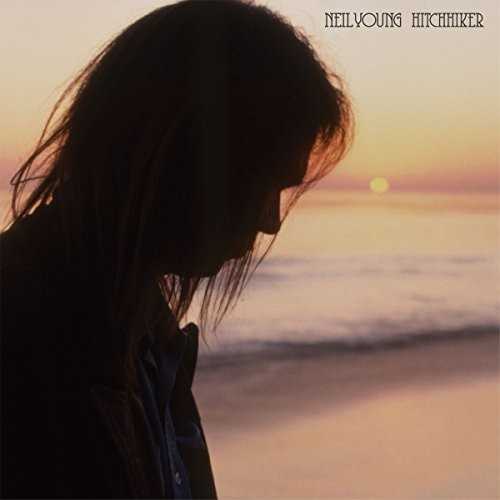 | Album: 42 of 43 Title: Hitchhiker Released: 2017-09-08 Tracks: 10 Duration: 33:36 Scroll: Up Down Top Bottom 25% 50% 75% Spotify TrackSamples Wikipedia Allmusic AlbumCover | 1 Pocahontas (03:26) 2 Powderfinger (03:22) 3 Captain Kennedy (02:51) 4 Hawaii (02:38) 5 Give Me Strength (03:40) 6 Ride My Llama (01:50) 7 Hitchhiker (04:37) 8 Campaigner (04:19) 9 Human Highway (03:16) 10 The Old Country Waltz (03:37) |
| Hitchhiker : Allmusic album Review : Recorded over the course of one lazy, stoned day in Malibu in 1976, Hitchhiker was never bootlegged, unlike Homegrown and Chrome Dreams, its unreleased cousins from the mid-70s. Neil Young first let its existence be known in 2014, when he mentioned a 1976 solo acoustic session recorded with longtime producer David Briggs that was "a complete piece." Most of the songs from that complete piece drifted out in different versions over the years, starting with the appearance of "Campaigner" on 1977s Decade -- the only time a song from this session saw the light of day prior to its complete release in 2017 -- running through three songs on Rust Never Sleeps and ending in 2010, when "Hitchhiker" showed up on Le Noise. At the time of the release of that Daniel Lanois-produced record, Young claimed that "Hitchhiker" was left "unfinished" until 2010, but any longtime Young watcher knows hes at his best when he doesnt tie up loose ends, which is one of the reasons Hitchhiker is compelling. Although Young is correct when he claims Hitchhiker is a "complete piece" -- it sustains a dusky sweetness from beginning to an end -- it is certainly not a polished album. Often, it feels as if Young is singing with no intention of his music being heard by a wider audience, but the presence of Briggs at the board means this doesnt sound like a ragged demo. Instead, Hitchhiker holds together as a mood piece, an album where Young slowly reckons with a new dawn after surviving a hectic mid-70s. It is the epilogue to his "Ditch Trilogy," the descent into darkness that began with 1973s Time Fades Away and ended with 1975s Tonights the Night, an album where the melancholy undercurrent never overwhelms the suggestion of cautious optimism. This delicate tone is what separates Hitchhiker from the shelved Chrome Dreams or Rust Never Sleeps, the two records that rely so heavily on shared material with this album. Those records are assured and confident, the work of somebody who has shaken off the ghosts who were stalking him. On Hitchhiker, Young still isnt certain if hes exorcized those demons, and that unease gives just enough complexity to the albums soothing ebb and flow. | ||
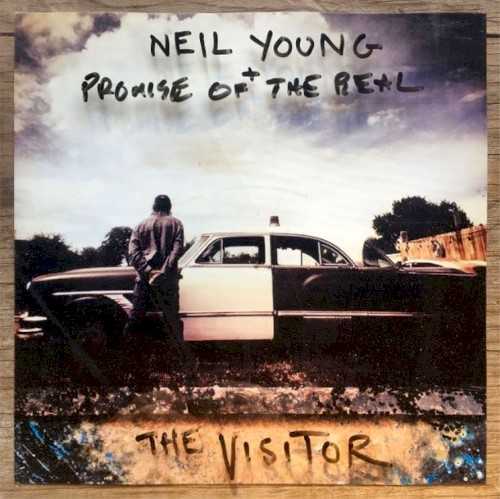 | Album: 43 of 43 Title: The Visitor Released: 2017-12-01 Tracks: 10 Duration: 51:10 Scroll: Up Down Top Bottom 25% 50% 75% Spotify Allmusic AlbumCover | 1 Already Great (05:47) 2 Fly by Night Deal (02:37) 3 Almost Always (04:50) 4 Stand Tall (05:13) 5 Change of Heart (05:54) 6 Carnival (08:20) 7 Diggin’ a Hole (02:33) 8 Children of Destiny (03:24) 9 When Bad Got Good (02:00) 10 Forever (10:32) |
| The Visitor : Allmusic album Review : Like many citizens of the world, Neil Young didnt handle the electoral events of 2016 with ease. Already leaning toward a state of constant cryptic protest -- he managed to turn his 2016 live album, Earth, into an ecological rallying cry -- he decided to record an entire album of outrage at the Orange One in 2017, roping in his new backing band, Promise of the Real, for support. The Visitor never disguises Youngs disgust with the direction America is headed. Neil calls out Trump for destroying the things he holds dear and he peppers the album with twists on rallying cries from the 2016 election: the record opens up with a declaration that America is "Already Great," and by the end, Young and Promise of the Real are chanting "Lock Him Up" in an echo of the chant Michael Flynn led at the Republican National Convention in the summer of 2016. All of these touches give The Visitor specificity and immediacy, but its hardly an album of stark folk songs. Young tries a little bit of everything here, murmuring along with a strummed acoustic, stumbling through a blues shuffle, hiring a choir and orchestra to weigh down "Children of Destiny," hamming it up with his band for an eight-minute dustbowl epic called "Carnival." Every one of these constant detours is interesting, thanks in large part to Promise of the Real. Where Crazy Horse lumbered, the Promise are fleet on their feet, so theyre able to lend a sense of adventure to The Visitor, and its musicality is whats tantalizing about the album -- its just supple enough to highlight how Young isnt bothering to get to the second draft of his songs. What lasts with The Visitor are texture and asides, how the band is able to elevate the songs to seem like they matter. Inspected individually, it all falls apart. Young doesnt mold his melodies or thoughts into something grander than impulse, which is why The Visitor seems fascinating upon the first listen, but tiresome upon repeats. Neil is making music for the moment and he doesnt much care if it lasts beyond that day or not, and while living in the moment is a good way to get through life, it doesnt do much for albums. | ||